Introduction
Slow Down, Find Humanity

EUROPE
NORTH
AMERICA
ASIA
AFRICA
PACIFIC OCEAN
Start
SOUTH
AMERICA
Walk route
Route by boat
AUSTRALIA
Human
migration route
Finish
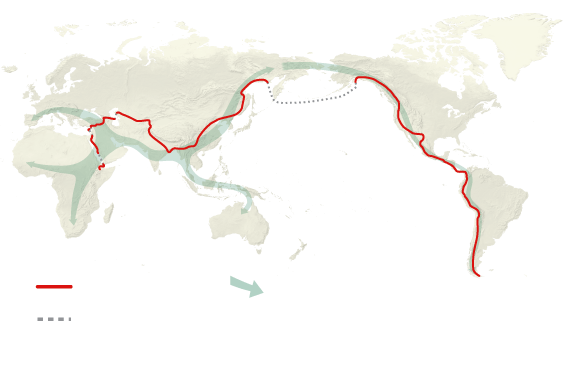
Start
Human
migration route
Walk route
Finish
Route by boat

EUROPE
NORTH
AMERICA
ASIA
AFRICA
PACIFIC OCEAN
Start
SOUTH
AMERICA
Walk route
AUSTRALIA
Route by boat
Human migration
route
Finish

EUROPE
NORTH
AMERICA
ASIA
AFRICA
PACIFIC OCEAN
Start
SOUTH
AMERICA
Walk route
Route by boat
AUSTRALIA
Human
migration route
Finish
CHAPTER 1
Out of Africa
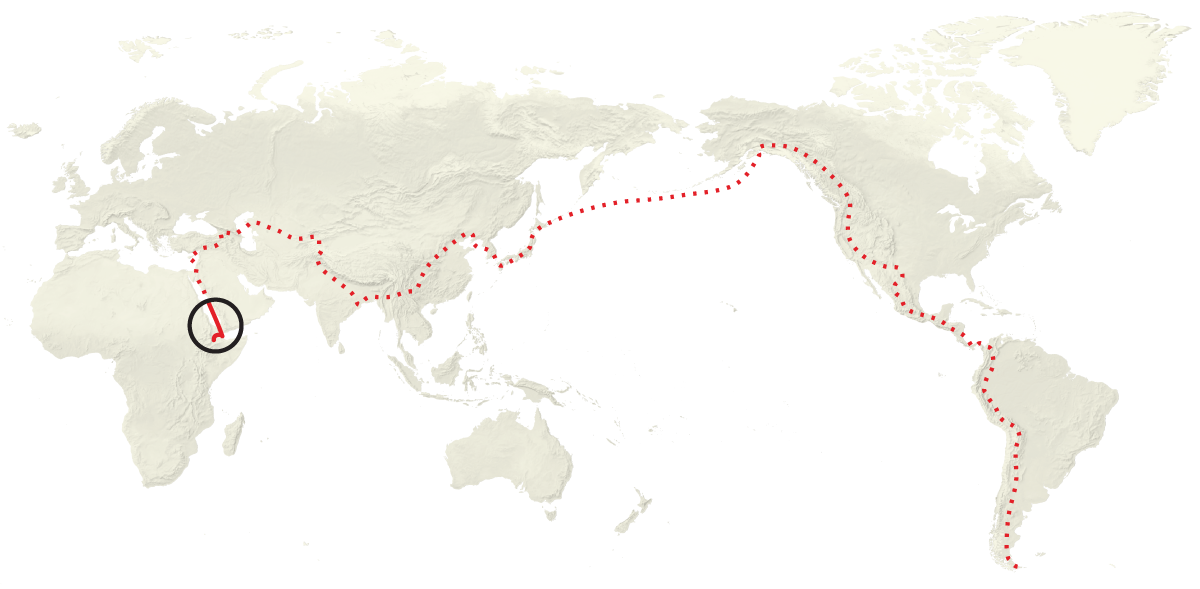
The journey begins in Ethiopia at one of the world’s oldest human fossil sites, Herto Bouri, and unspools across the scalding Afar Triangle, in the Rift Valley. Along this pathway our restless forebears ventured forth toward the Gulf of Aden, where they first stepped out of the mother continent to explore the wider world. As Salopek bears witness, this ancient pathway remains a conduit of opportunity—and sometimes fatal tragedy—for migrants seeking a better life today.
Walking is falling forward. Each step we take is an arrested plunge, a collapse averted, a disaster braked. In this way, to walk becomes an act of faith.Paul Salopek | From To Walk the World
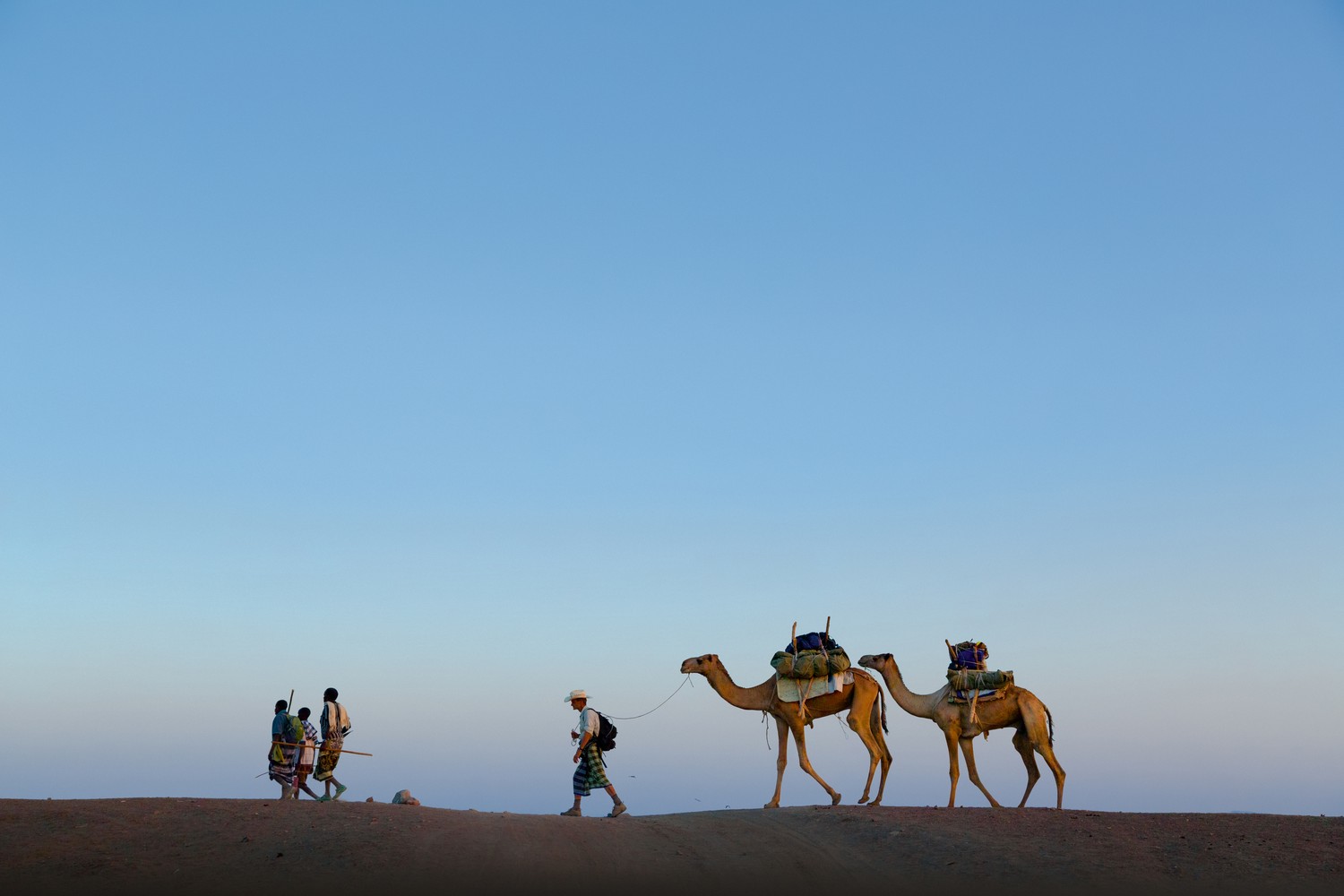
Two weeks into the Out of Eden Walk, Paul Salopek and local guides traverse the Afar region of northeastern Ethiopia.
Photograph by John Stanmeyer
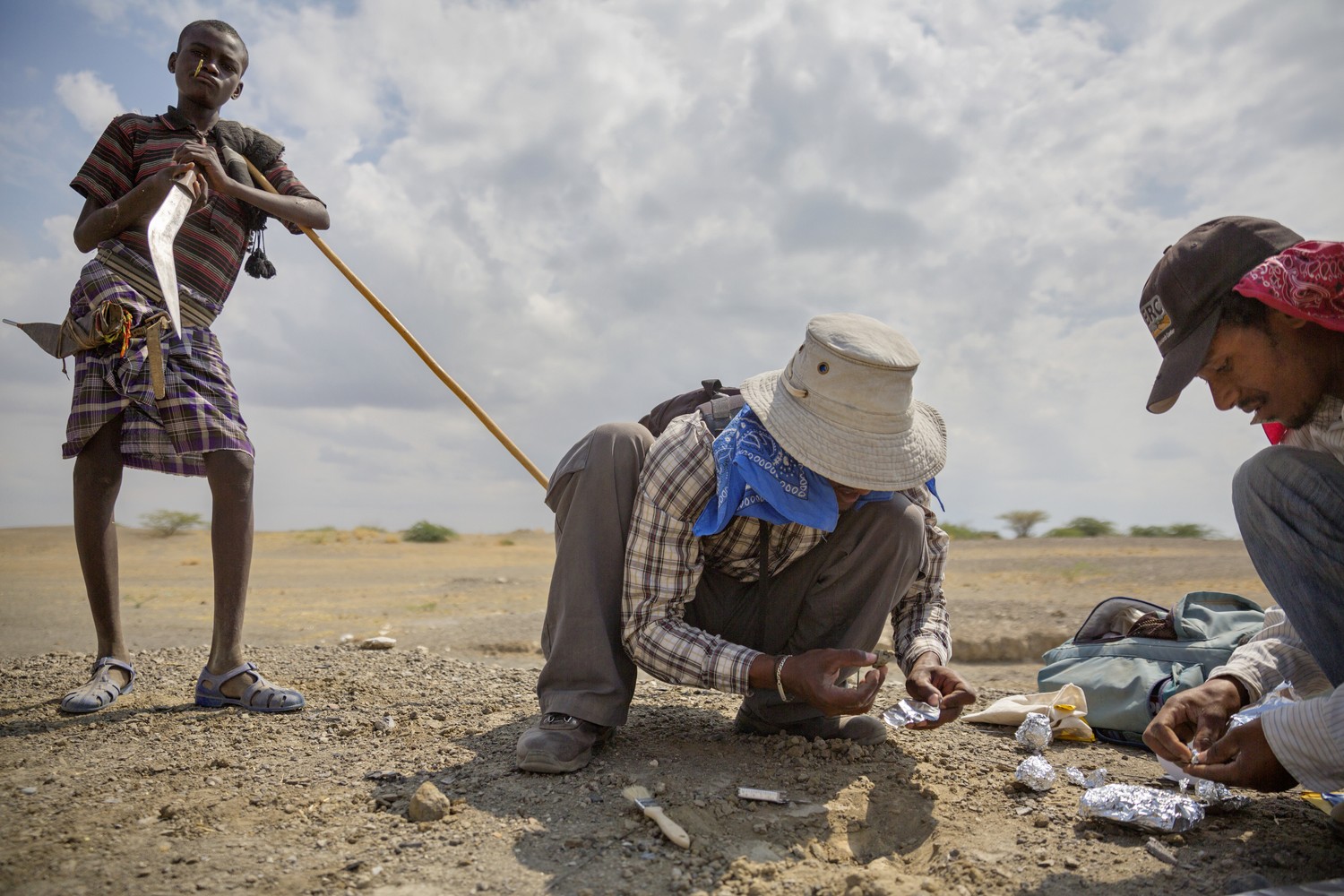
Inches beneath the barren surface of Ethiopia’s Afar depression, in one of Earth’s hottest places, paleontologists with the Middle Awash Project find tools and other evidence of humans from 60,000 years ago and earlier. An Afar youth holding a traditional knife, or jile, watches the researchers at work.
Photograph by John Stanmeyer

Villagers pray for rain in the Afar desert. A mega drought lasting thousands of years may have bottled up early humans in Africa, making travel risky. A climate shift bringing wet periods likely helped propel the first migration.
Photograph by John Stanmeyer

Paul Salopek and guide Ahmed Alema Hessan leave the Ethiopian village of Bouri—the walk’s starting point.
Photograph by John Stanmeyer
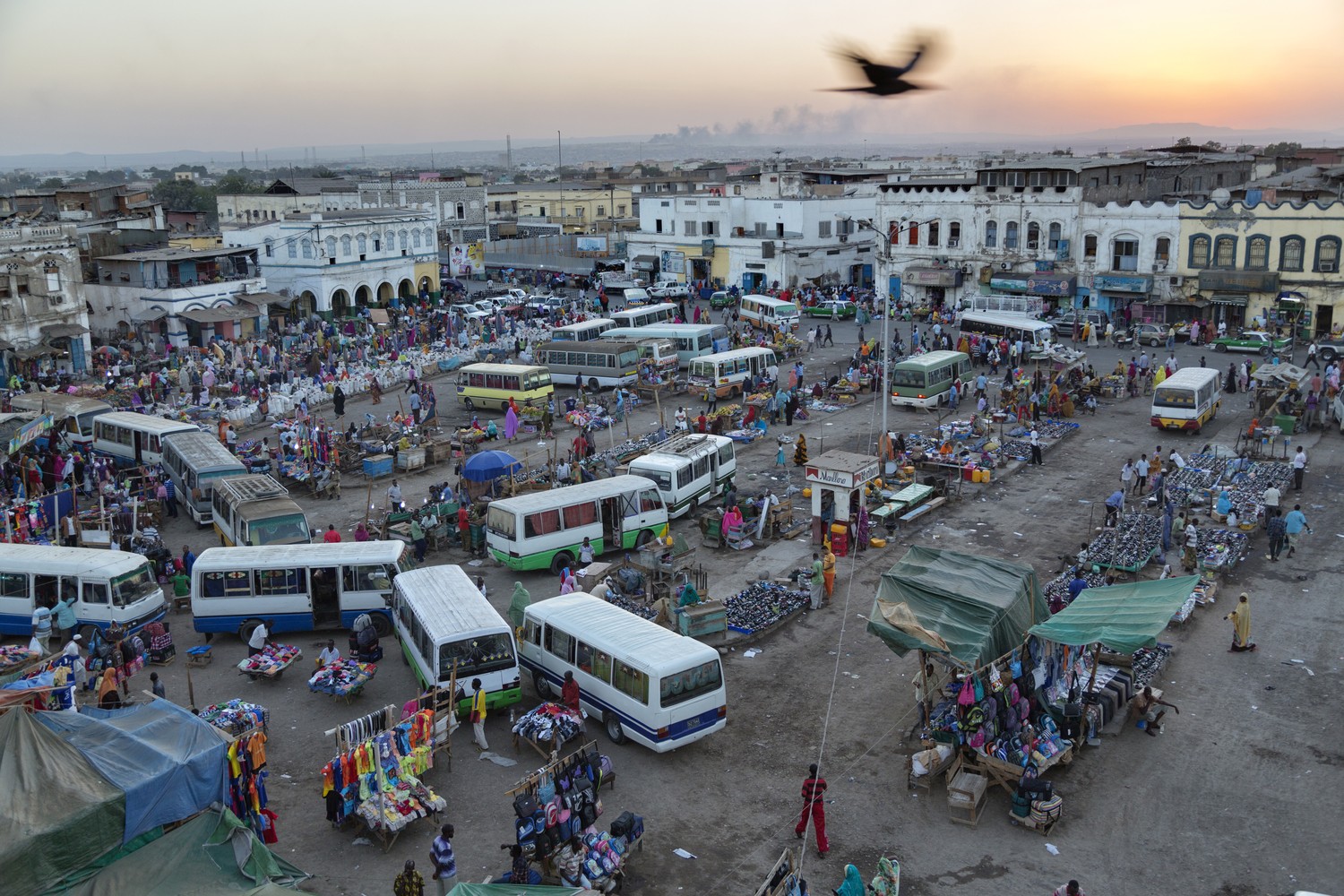
An urban oasis, the central market in Djibouti city pulses with traffic. Buses bring migrants who, Salopek says, have changed in a generation from pre-modern pastoralists to hustling wage earners in this city of 500,000.
Photograph by John Stanmeyer
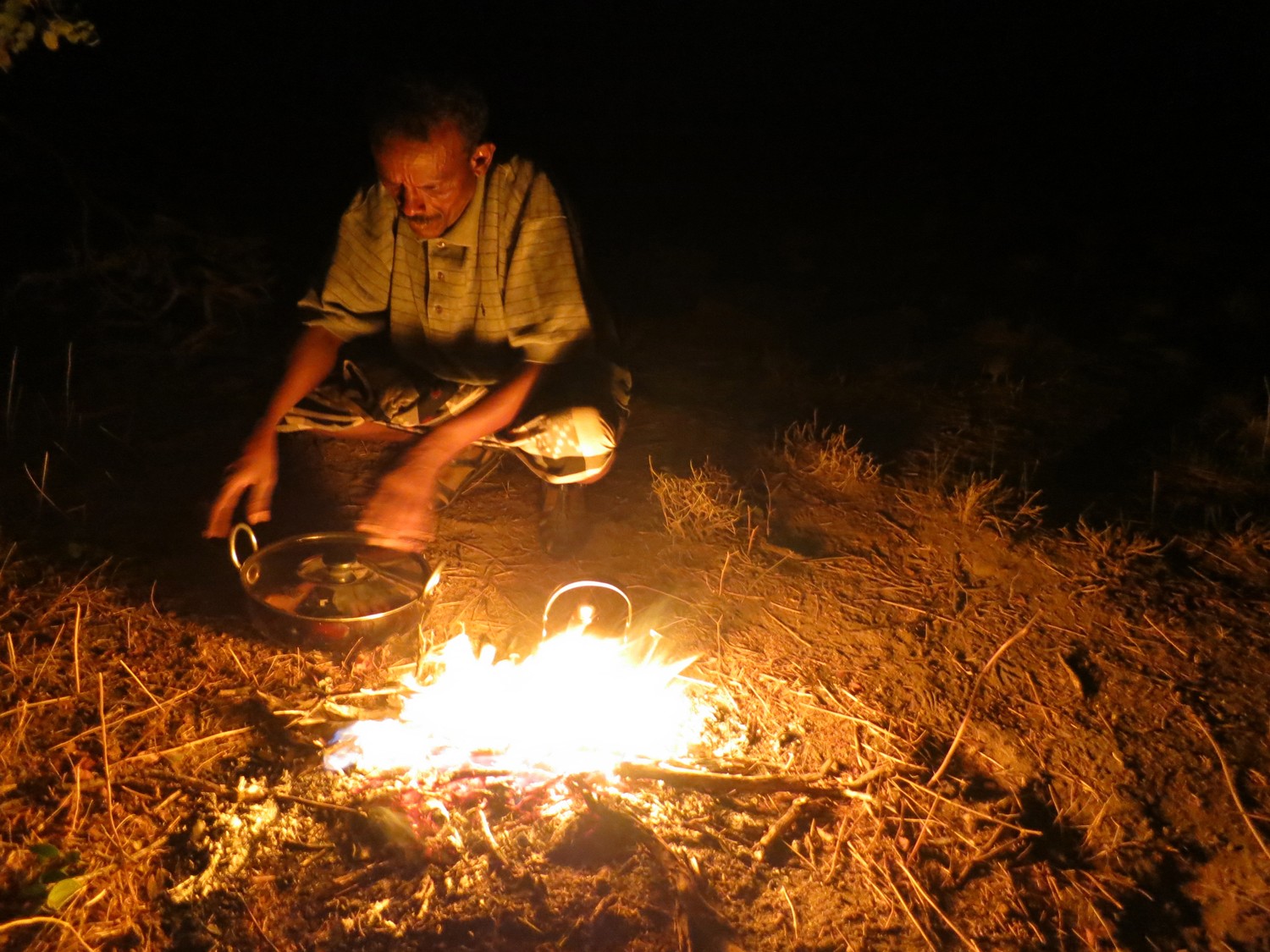
Clan tensions meant that Alema often preferred camping out to staying with fellow Afar.
Photograph by Paul Salopek

In Djibouti, stone beacons helped ancient travelers navigate the desert during dust storms.
Photograph by John Stanmeyer
The journey begins in Ethiopia at one of the world’s oldest human fossil sites, Herto Bouri, and unspools across the scalding Afar Triangle, in the Rift Valley. Along this pathway our restless forebears ventured forth toward the Gulf of Aden, where they first stepped out of the mother continent to explore the wider world. As Salopek bears witness, this ancient pathway remains a conduit of opportunity—and sometimes fatal tragedy—for migrants seeking a better life today.
Walking is falling forward. Each step we take is an arrested plunge, a collapse averted, a disaster braked. In this way, to walk becomes an act of faith.Paul Salopek | From To Walk the World
CHAPTER 2
Holy Lands
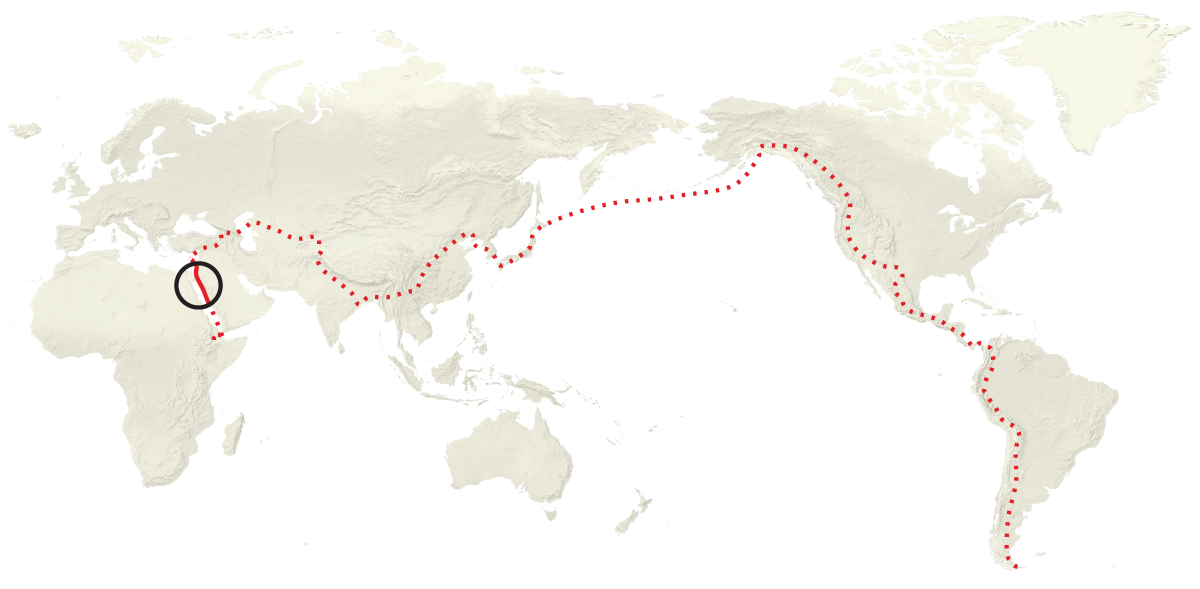
The trek through the Middle East begins in the fabled deserts that guard the cradle of Islam—the Hejaz of Saudi Arabia, long forbidden to outsiders. Meetings with Bedouin nomads and echoes of the ghost of Lawrence of Arabia give way to encounters in the contested borderlands between Israelis and Palestinians. Crossing the West Bank, Salopek gets caught in a skirmish between these two peoples. Then, to circumvent the bloody civil war in Syria, he is forced to take cargo ships from Israel to Turkey.
Not an inch of this antique vista hasn’t been fought over, cursed, blessed, claimed for one divinity or another. It is a land worn smooth like a coin traded through countless fingers.Paul Salopek | From Blessed. Cursed. Claimed.
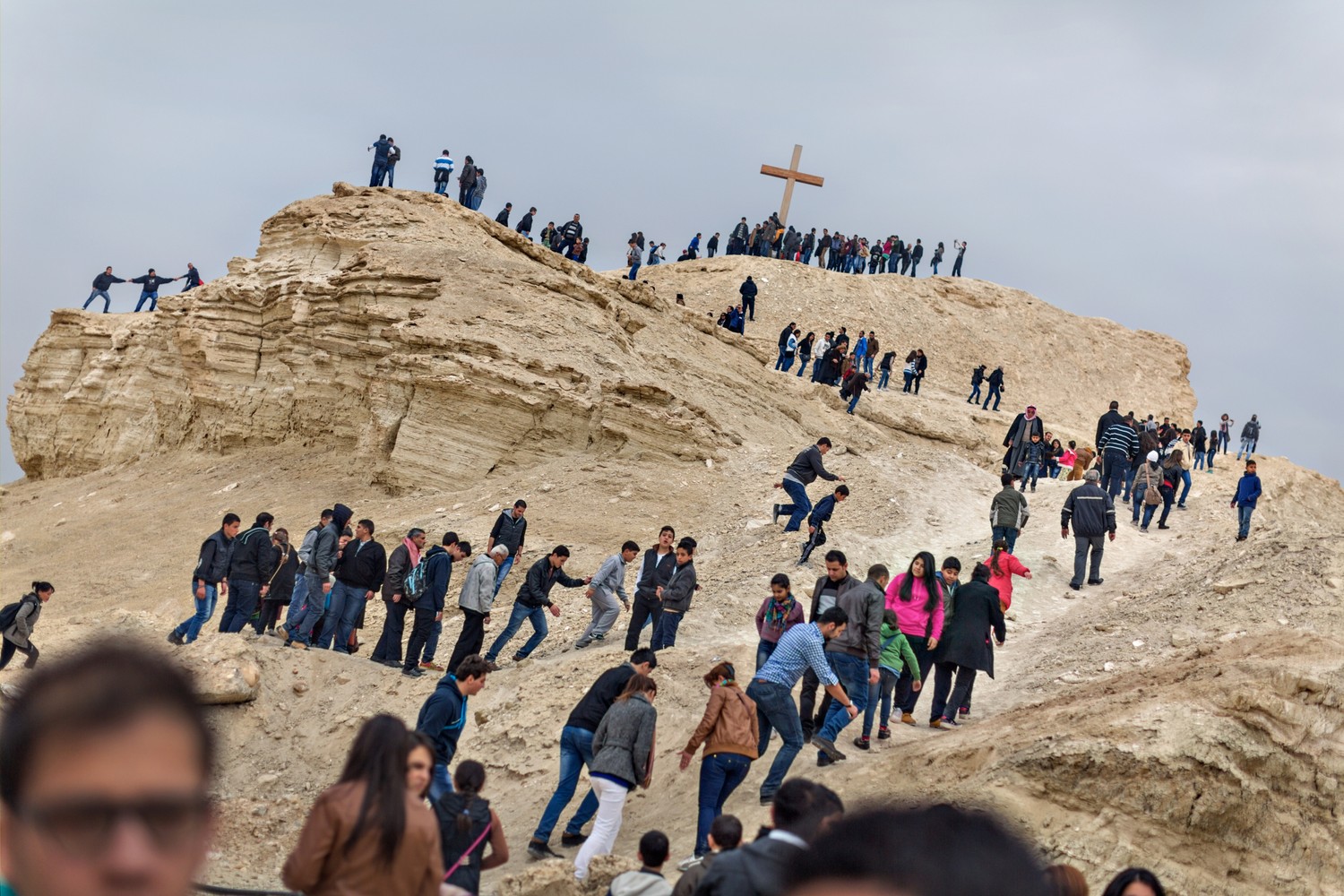
Arab Christians in Jordan hike to pray beneath a cross during Feast of Epiphany week near the banks of the Jordan River.
Photograph by John Stanmeyer
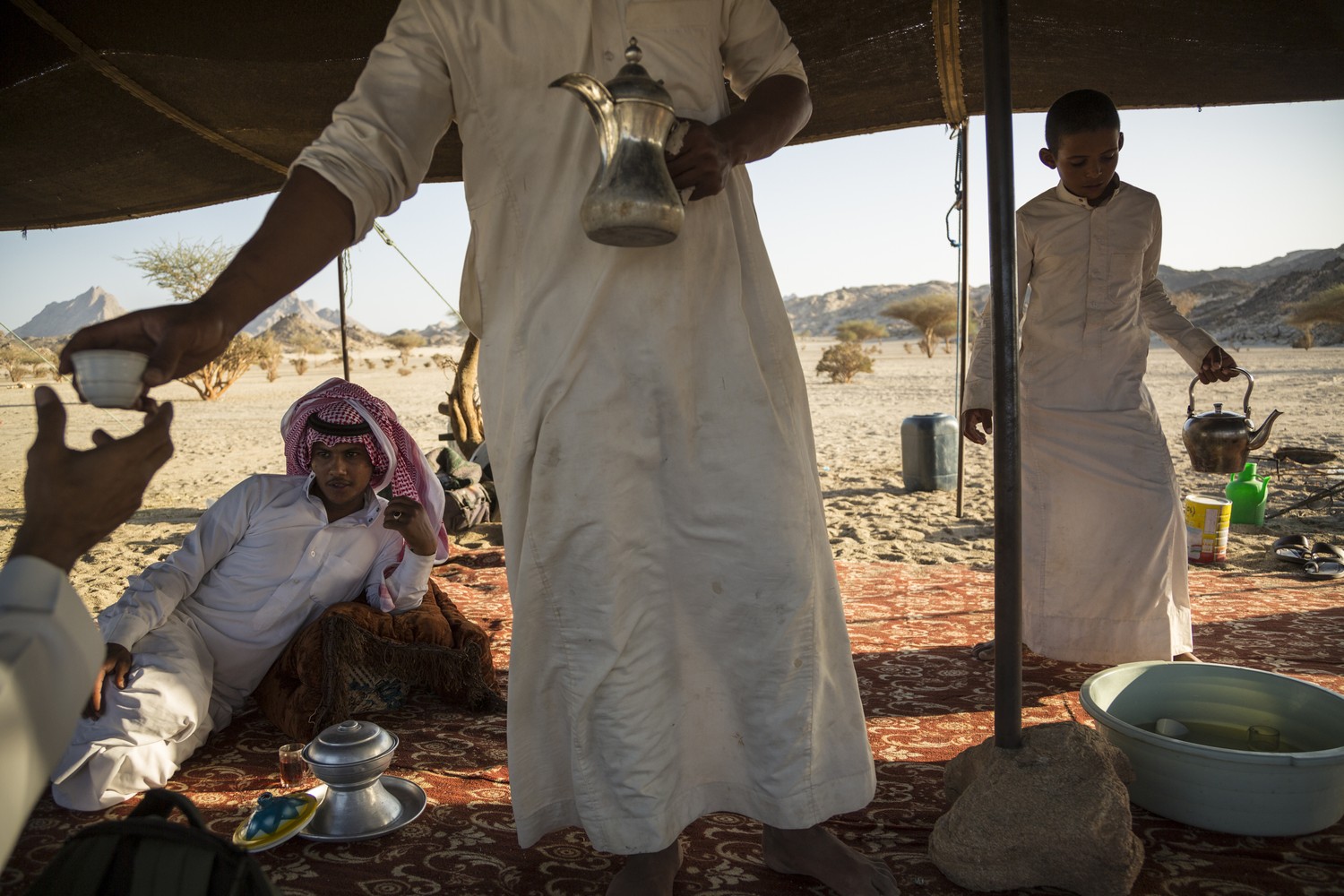
Coffee is served at a Bedouin camp in the desert near Yanbu, Saudi Arabia.
Photograph by John Stanmeyer
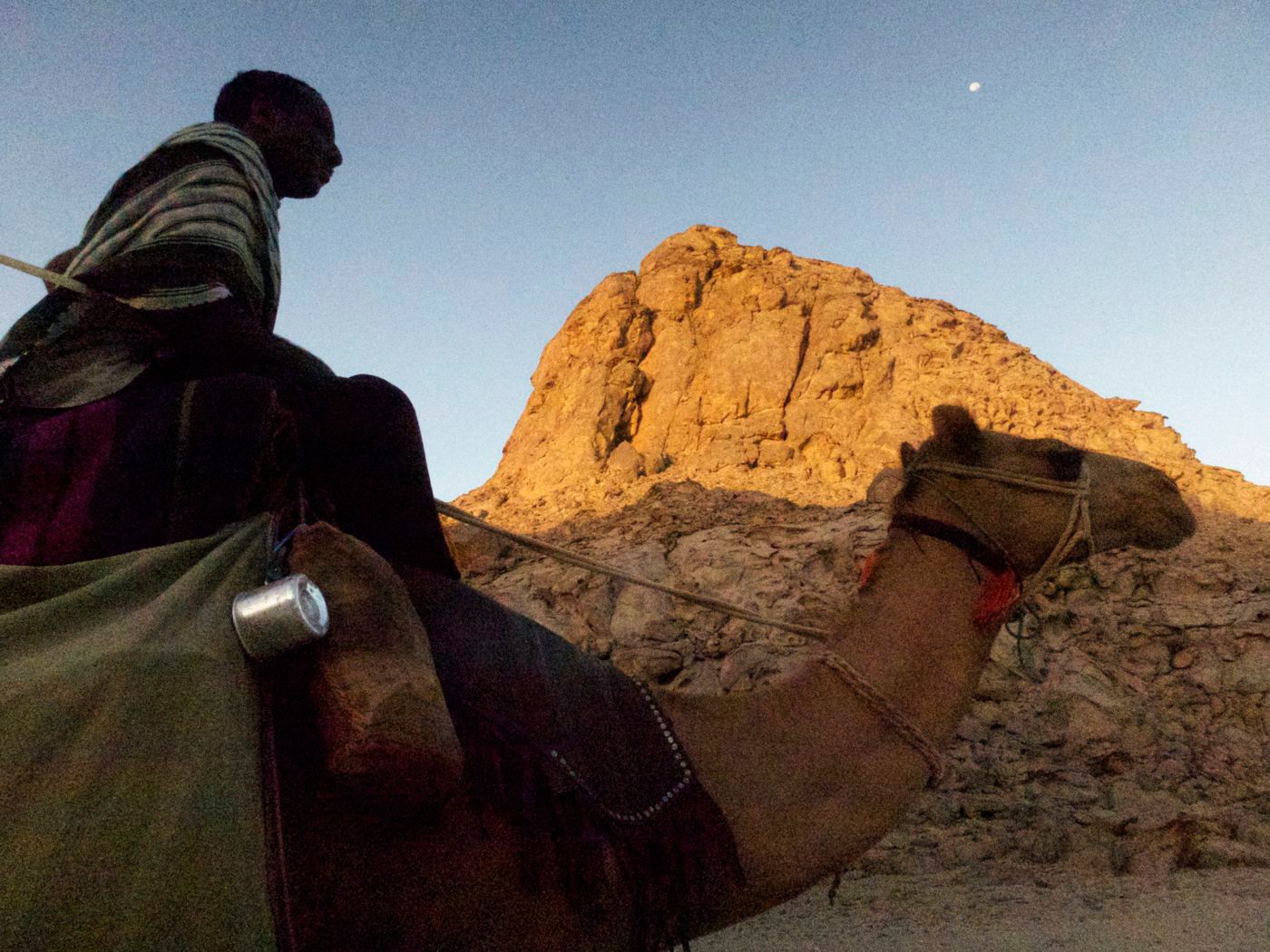
Guide Awad Omran and Seema the camel get a dawn start near Wadi Dabd, Saudi Arabia.
Photograph by Paul Salopek

Nabataeans, a pre-Islamic people, carved palatial tombs at Madain Salih.
Photograph by John Stanmeyer
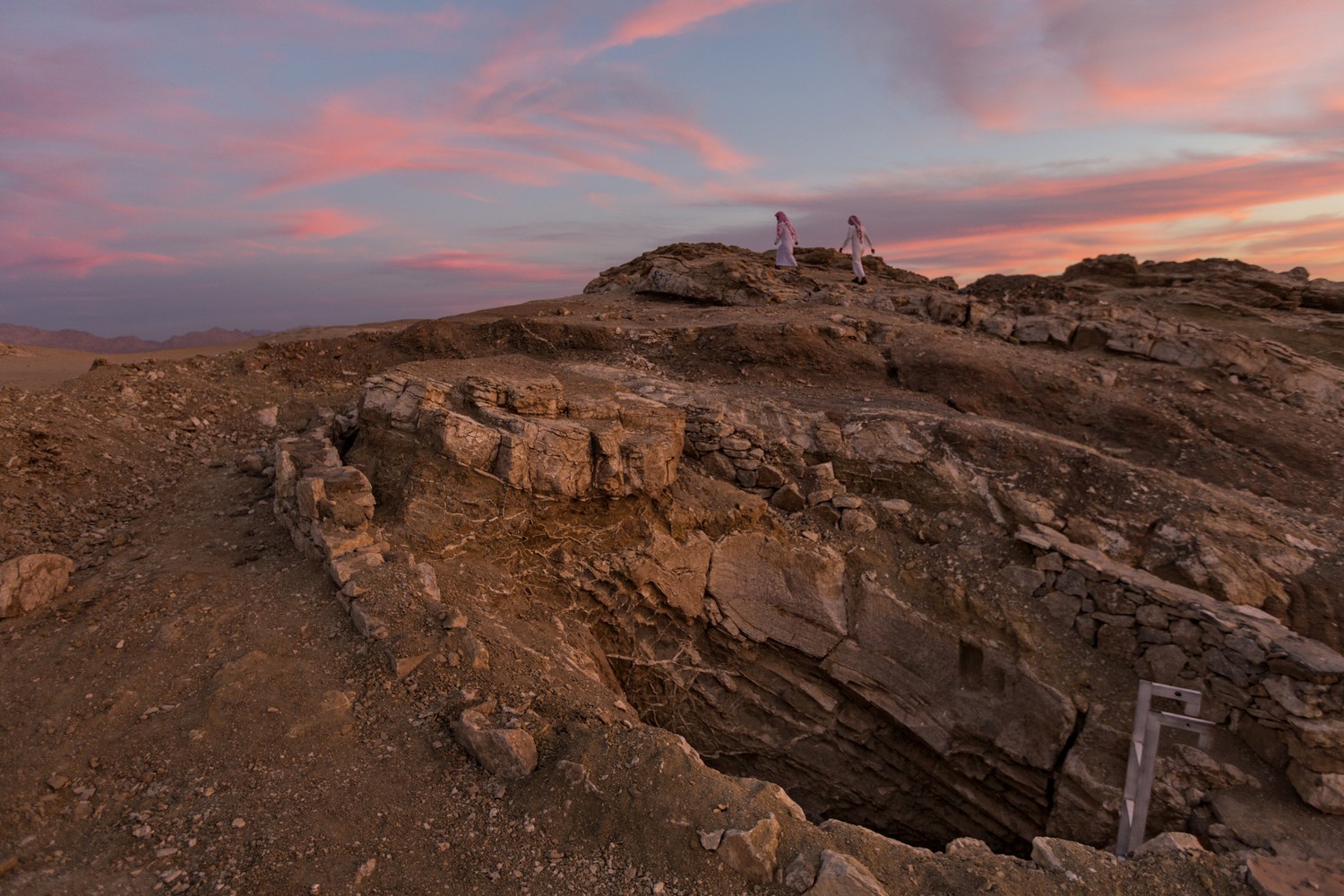
For centuries, a well at Al Bad oasis, now a dry hole, nourished camel caravans and religious travelers. Folklore says that Moses watered his sheep here.
Photograph by John Stanmeyer
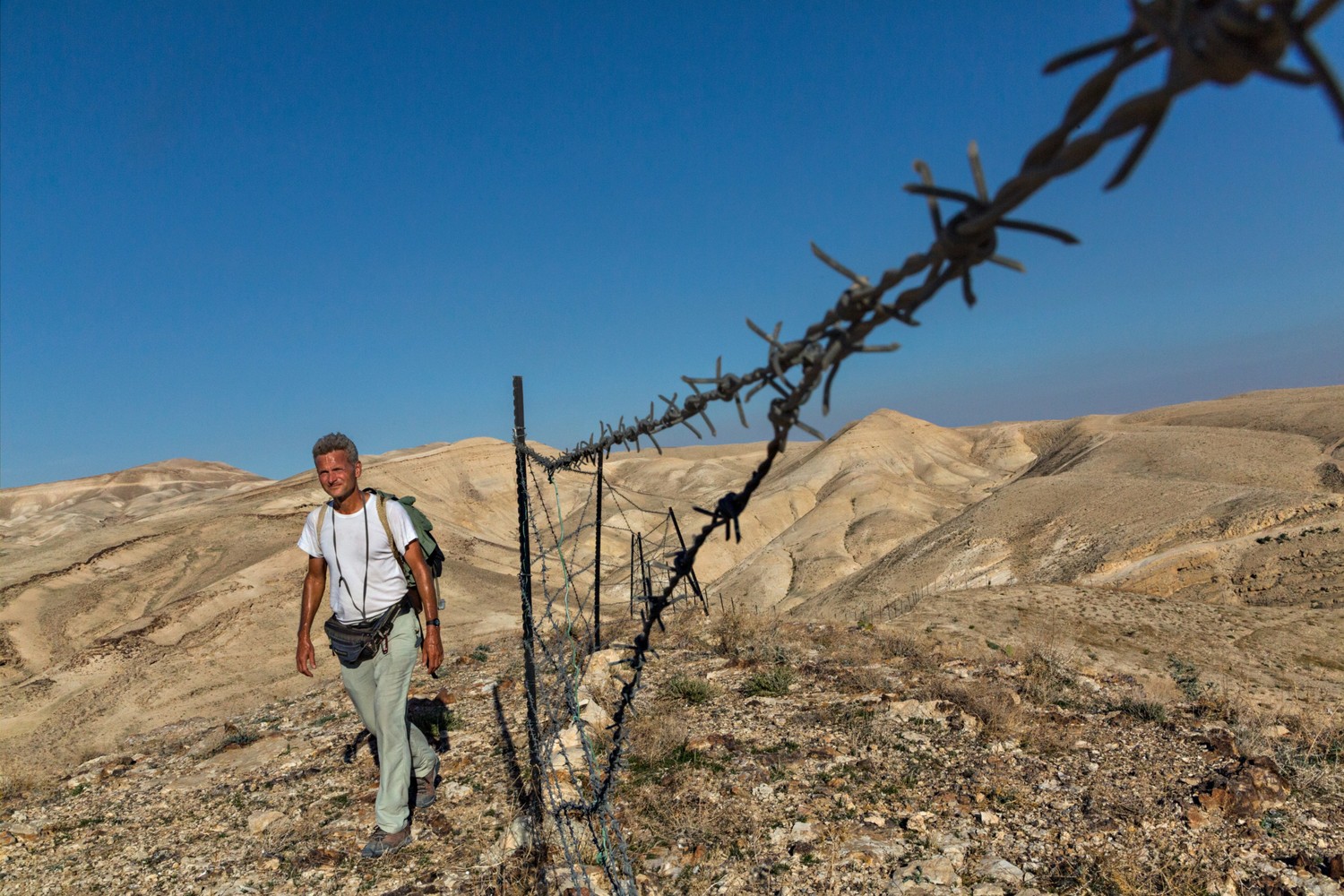
Striding toward Bethlehem, in the West Bank, Paul is detoured by a herder’s fence, one of the first human-made barriers—other than checkpoints and border gates—he’s faced in some 2,300 miles since he started out in Ethiopia.
Photograph by John Stanmeyer
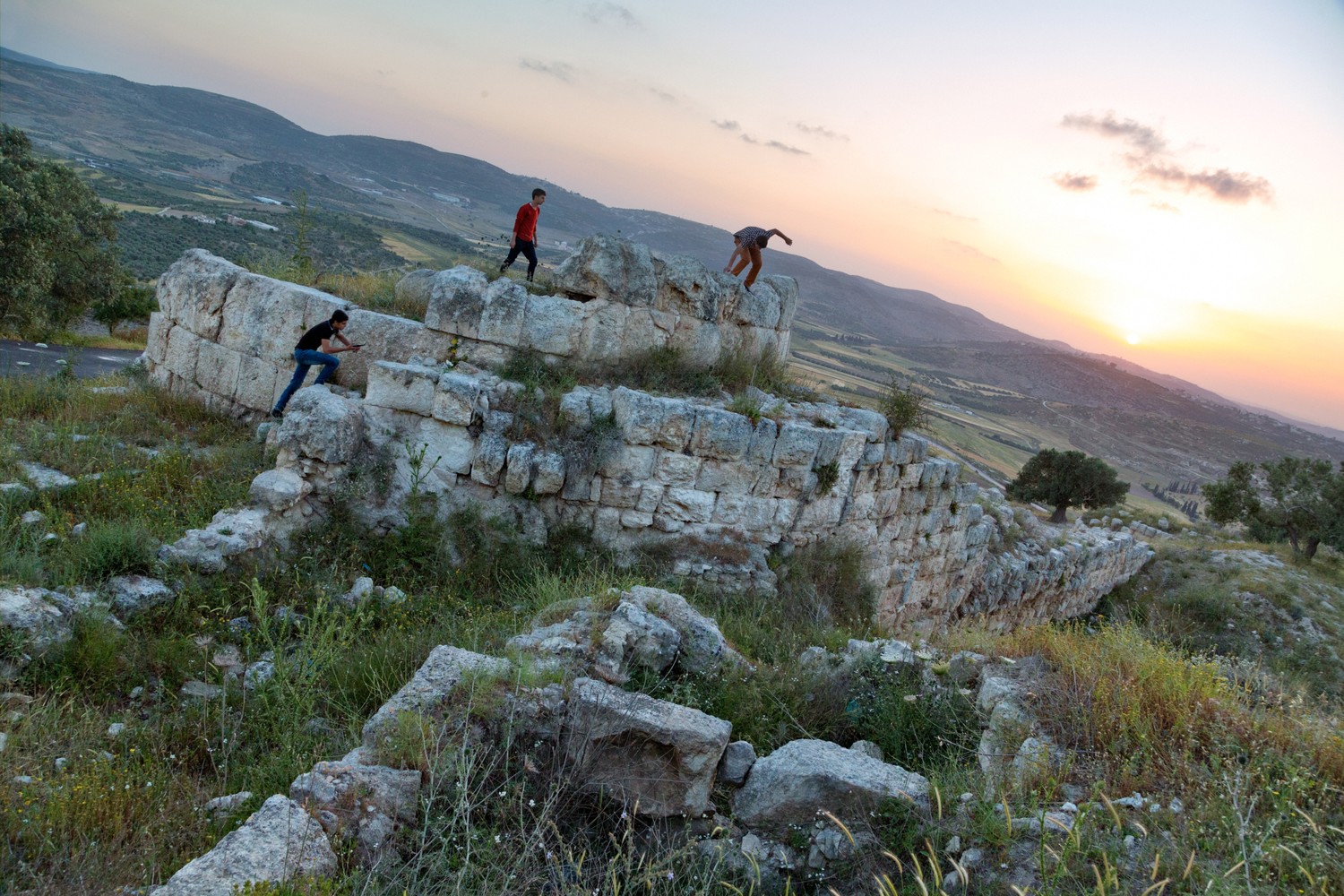
Youths explore Roman ruins at Samaria-Sebaste, a West Bank archaeological site divided between Israeli and Palestinian control. A forum and a temple to Augustus remain from the pre-Christian Roman city.
Photograph by John Stanmeyer
The trek through the Middle East begins in the fabled deserts that guard the cradle of Islam—the Hejaz of Saudi Arabia, long forbidden to outsiders. Meetings with Bedouin nomads and echoes of the ghost of Lawrence of Arabia give way to encounters in the contested borderlands between Israelis and Palestinians. Crossing the West Bank, Salopek gets caught in a skirmish between these two peoples. Then, to circumvent the bloody civil war in Syria, he is forced to take cargo ships from Israel to Turkey.
Not an inch of this antique vista hasn’t been fought over, cursed, blessed, claimed for one divinity or another. It is a land worn smooth like a coin traded through countless fingers.Paul Salopek | From Blessed. Cursed. Claimed.
CHAPTER 3
Autumn Wars

In southern Turkey, one of the oldest farmed landscapes, Salopek meanders through pistachio orchards, Bronze Age ruins, and walled medieval cities. And he walks into one of the greatest humanitarian catastrophes of our time: tides of refugees from Syria’s civil war. Turning northeast, he passes through tense Kurdish villages en route to the Caucasus Mountains and a frigid crossing into Georgia—an oasis of stability in a turbulent region. From the capital, Tbilisi, Salopek sprints through Azerbaijan to the shore of the Caspian Sea. Central Asia and the ancient Silk Roads beckon.
The total number of destitute, uprooted people in the Middle East now scrapes five million. If you think this exodus won’t touch you, you are a fool.Paul Salopek | From Fleeing Terror, Finding Refuge
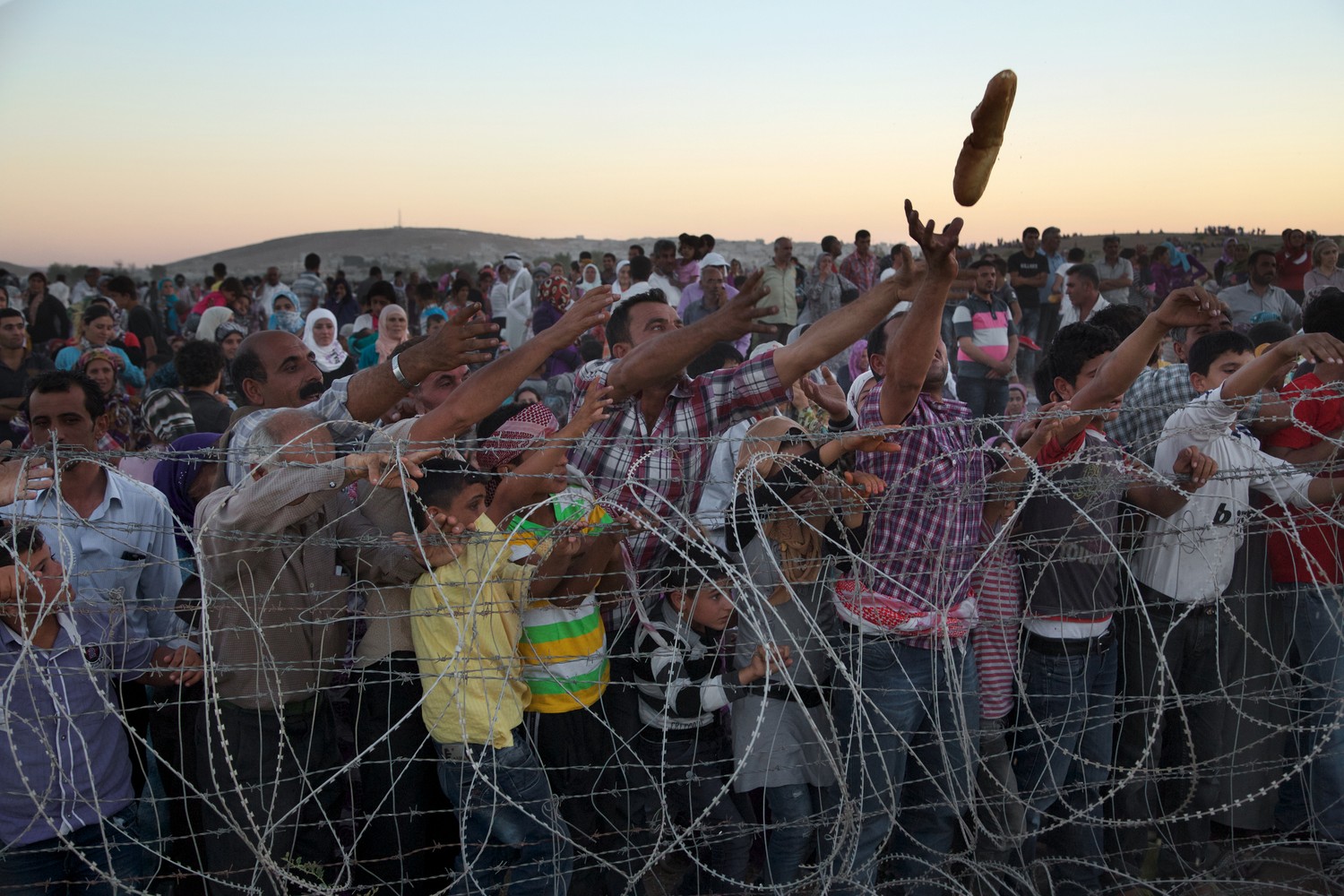
With their homes in Ayn al Arab, Syria, under attack, ethnic Kurds push toward a barbed wire fence at the Turkish border.
Photograph by John Stanmeyer
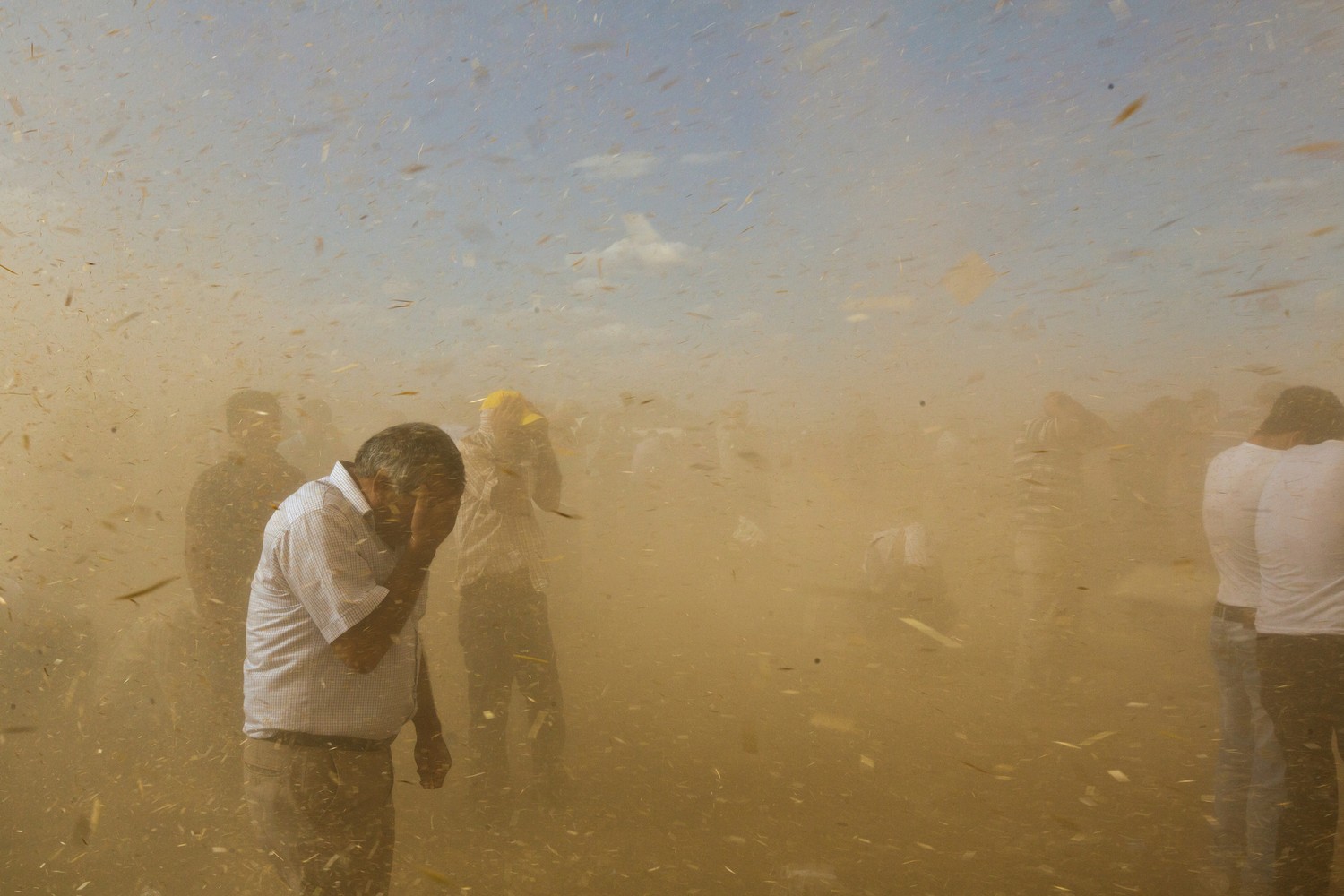
A dust devil swirls dirt and plant debris pulverized by the footsteps of migrants fleeing Syria. Relatives, friends, and helpful strangers—waiting to welcome the refugees as they walk into Turkey—are caught in the maelstrom.
Photograph by John Stanmeyer
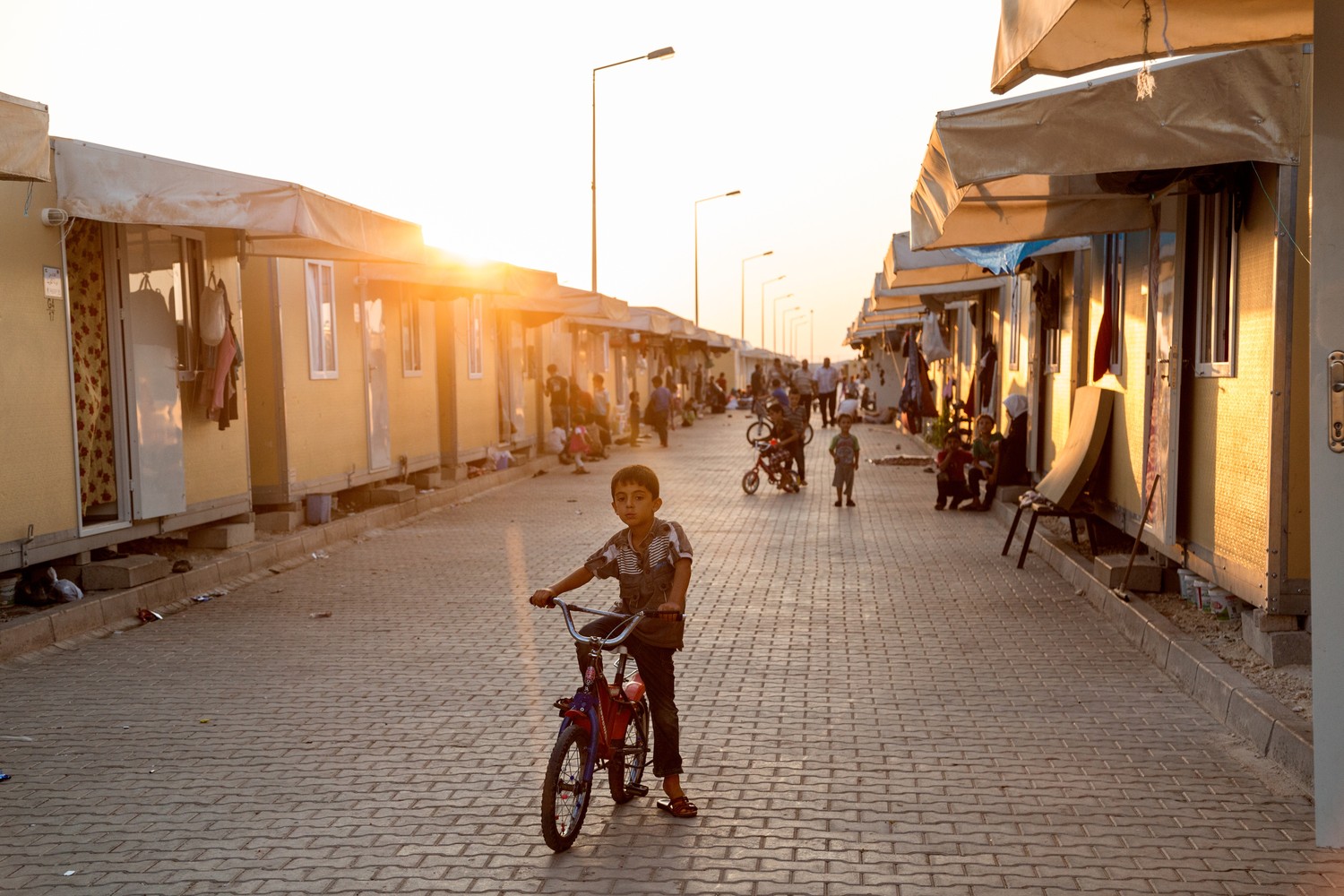
Container houses at the Kilis 2 refugee camp in Turkey line a spacious avenue used mostly by kids on bikes and adults on foot.
Photograph by John Stanmeyer
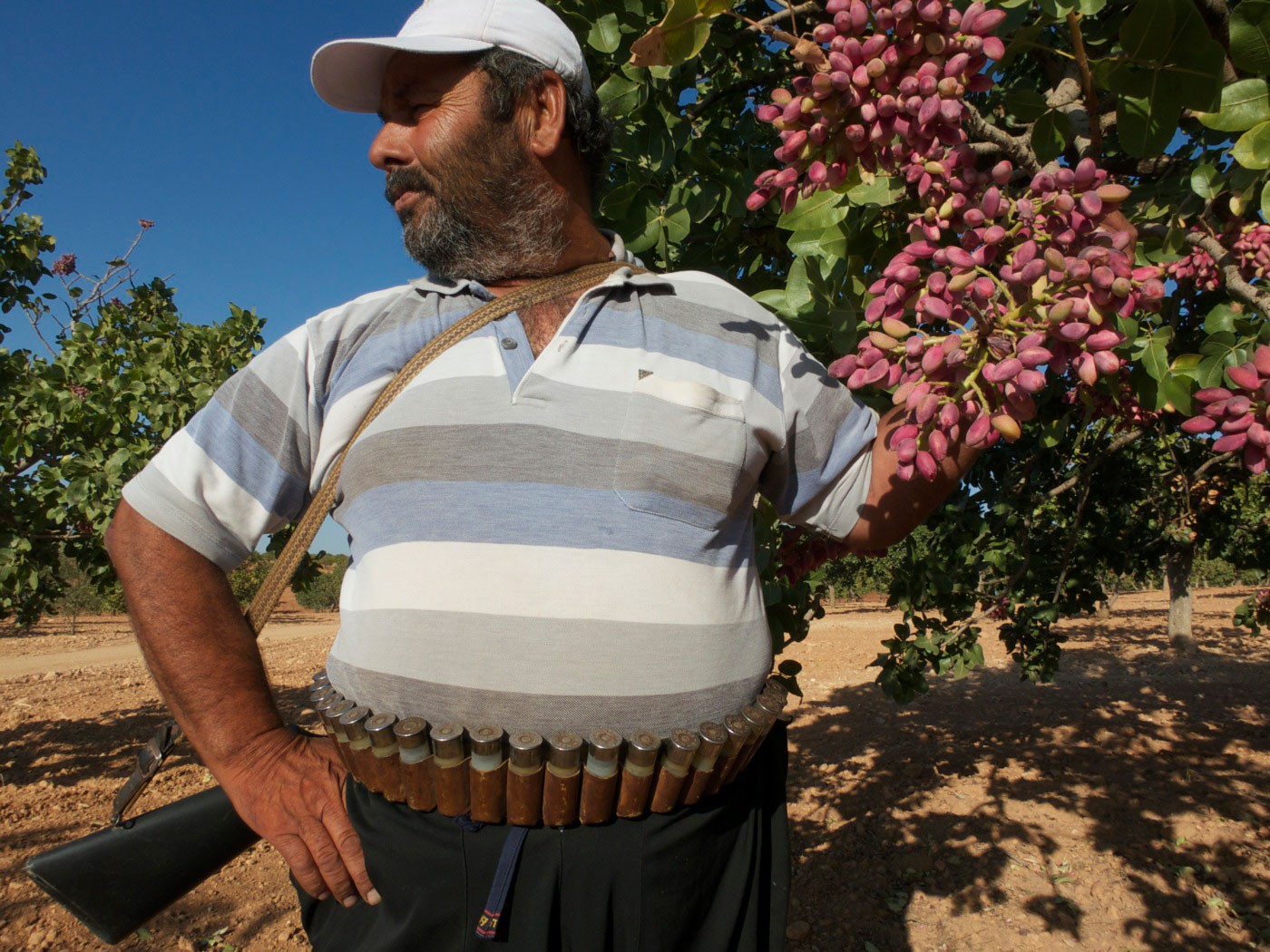
Pistachio guard Cebir Sercan and the treasure he protects near Nizip, Turkey.
Photograph by Paul Salopek

Guide Murat Yazar, Kirkatir the mule, and the fat, lush land of Kurdish Anatolia—a winter wheat field near Lake Van, Turkey.
Photograph by Paul Salopek
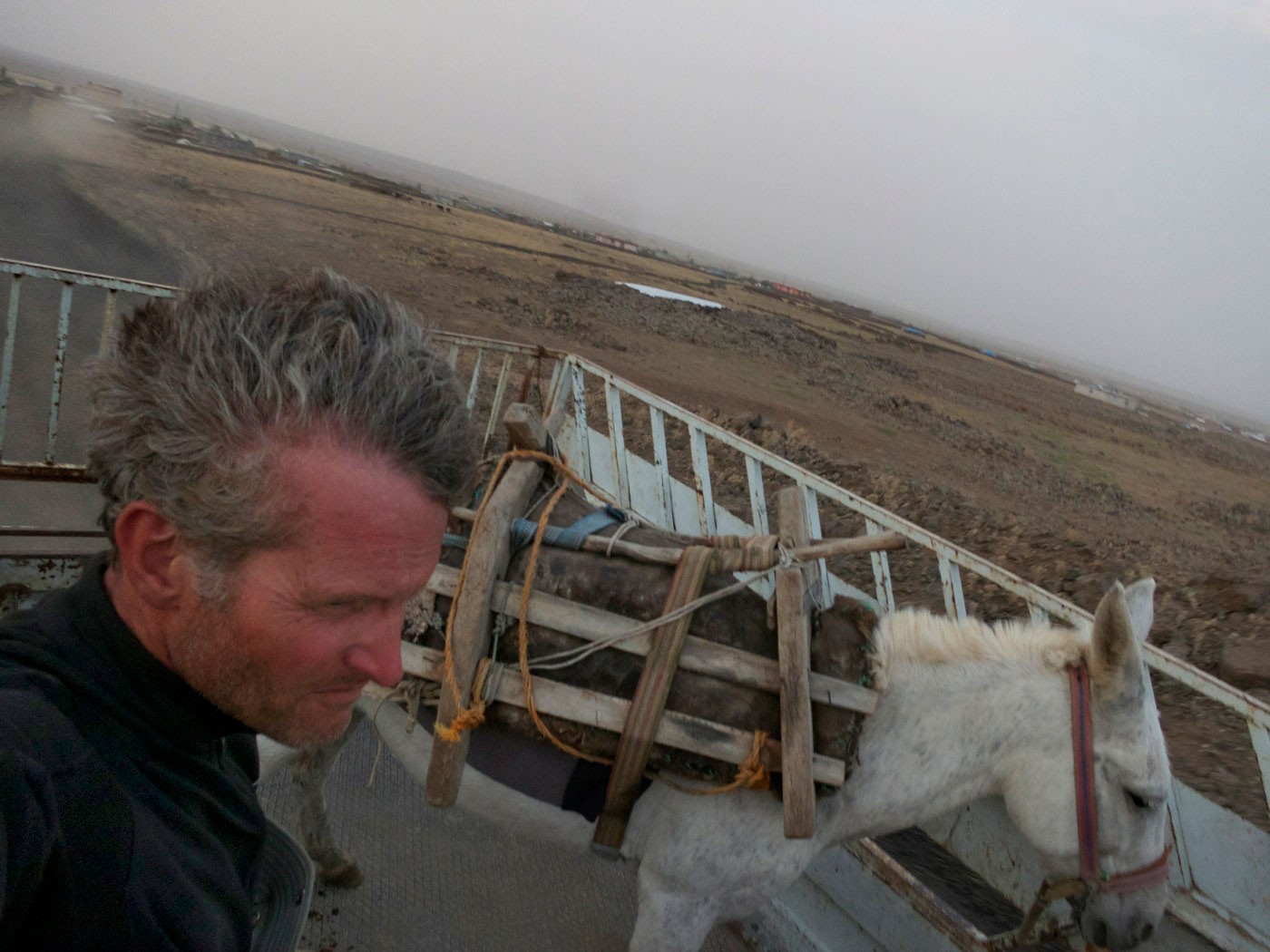
Mistaken for infiltrators, Salopek and his guide are detained in southeastern Turkey by armed villagers then forced to leave the area by truck.
Photograph by Paul Salopek
In southern Turkey, one of the oldest farmed landscapes, Salopek meanders through pistachio orchards, Bronze Age ruins, and walled medieval cities. And he walks into one of the greatest humanitarian catastrophes of our time: tides of refugees from Syria’s civil war. Turning northeast, he passes through tense Kurdish villages en route to the Caucasus Mountains and a frigid crossing into Georgia—an oasis of stability in a turbulent region. From the capital, Tbilisi, Salopek sprints through Azerbaijan to the shore of the Caspian Sea. Central Asia and the ancient Silk Roads beckon.
The total number of destitute, uprooted people in the Middle East now scrapes five million. If you think this exodus won’t touch you, you are a fool.Paul Salopek | From Fleeing Terror, Finding Refuge
CHAPTER 4
Silk Road
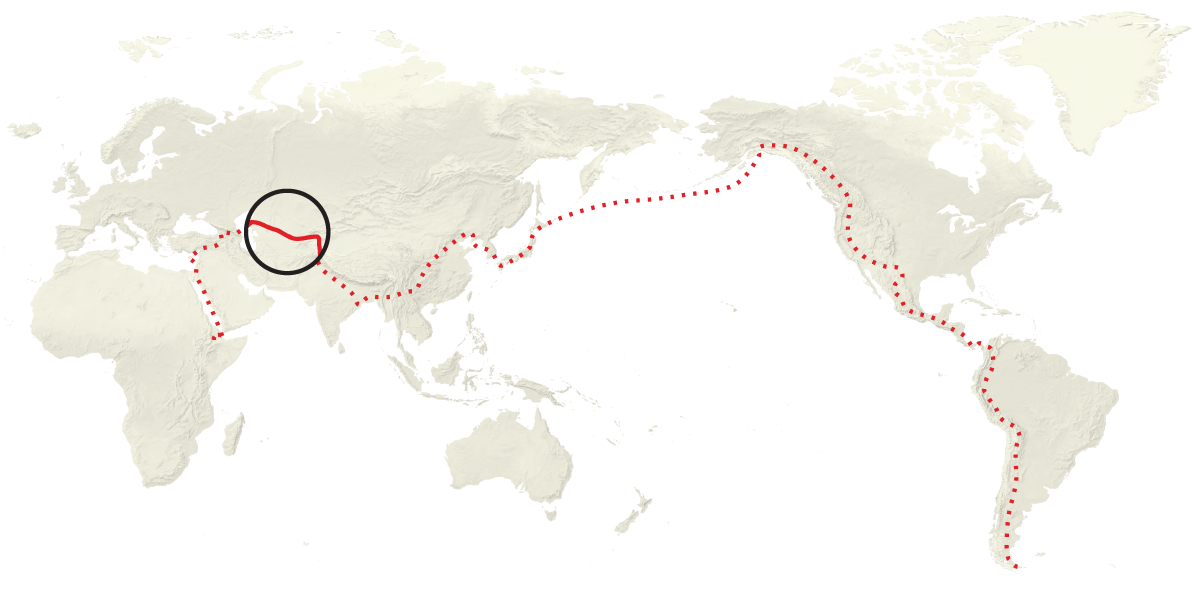
Horses were domesticated in Kazakhstan, but finding a cargo animal today to span this country’s vast steppes proves no easy task. Salopek and his local guides make the first foot traverse in almost a century of the wild Ustyurt Plateau straddling Kazakhstan and Uzbekistan—a barren upland crisscrossed in earlier times by Neolithic hunters, Silk Road camel drivers, and armies of Scythians, Mongols, and Russians. The furnace of the Kyzyl Kum, or Red Desert, sears the route to the legendary oasis cities of Bukhara and Samarkand.
This spring the rains cascaded down in torrents not seen in a generation, turning the steppes into glue, filling the salt basins with brackish water.Paul Salopek | From Watch: An Ancient Prairie Comes Back to Life
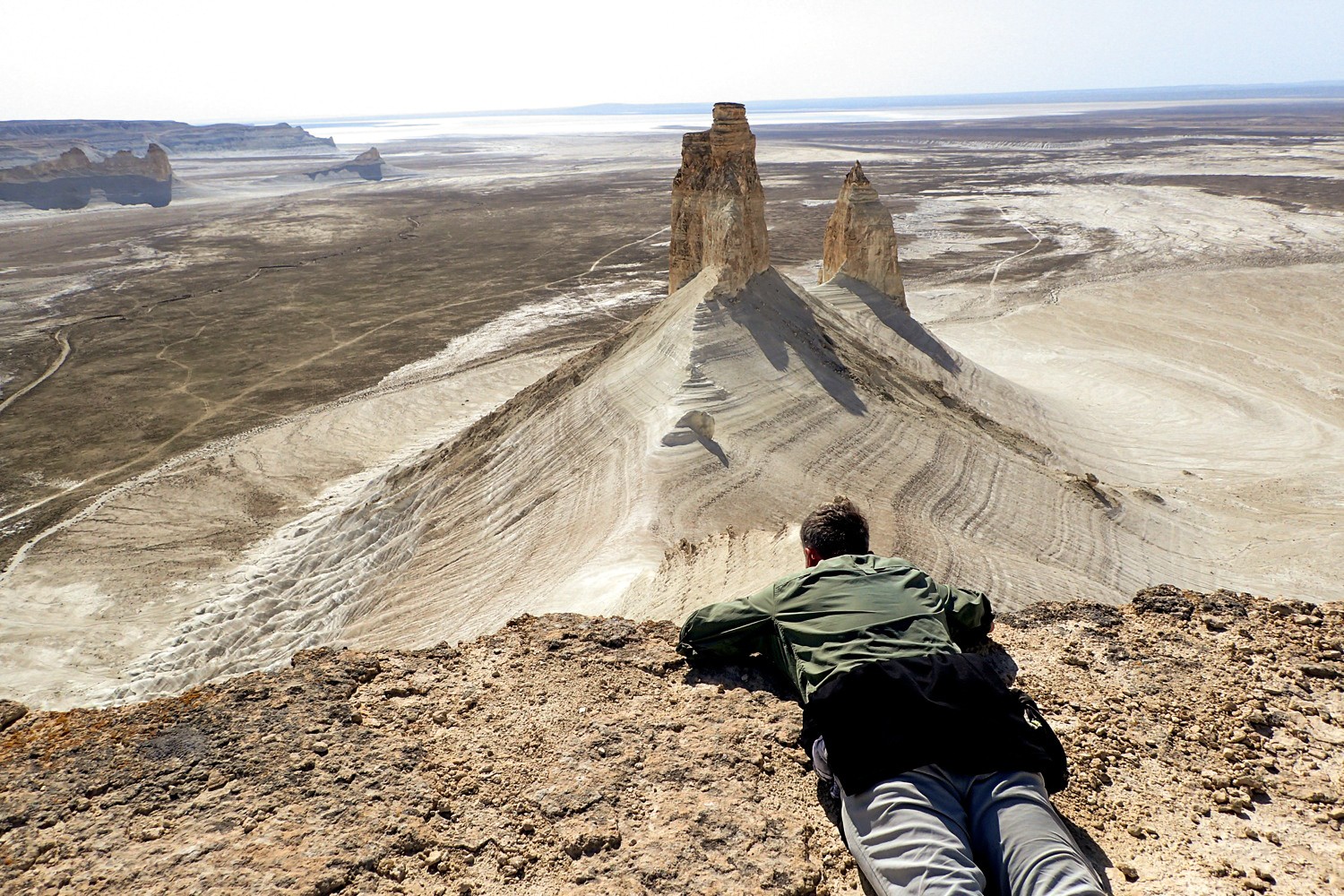
First true desert since Israel—the primordial badlands of the Ustyurt Plateau, Kazakhstan.
Photograph by Paul Salopek
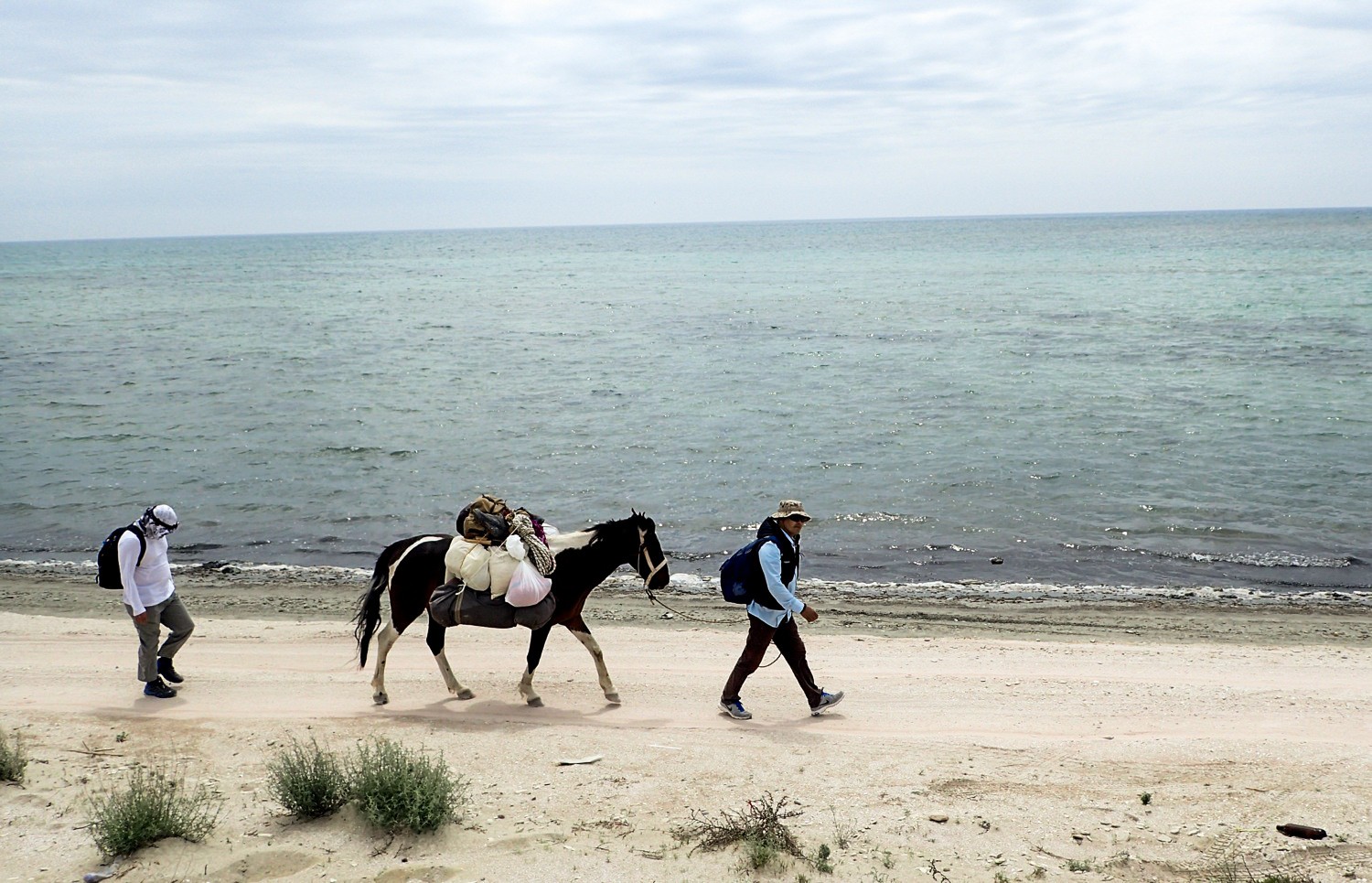
Setting out with a new steed along the shores of the Caspian.
Photograph by Paul Salopek
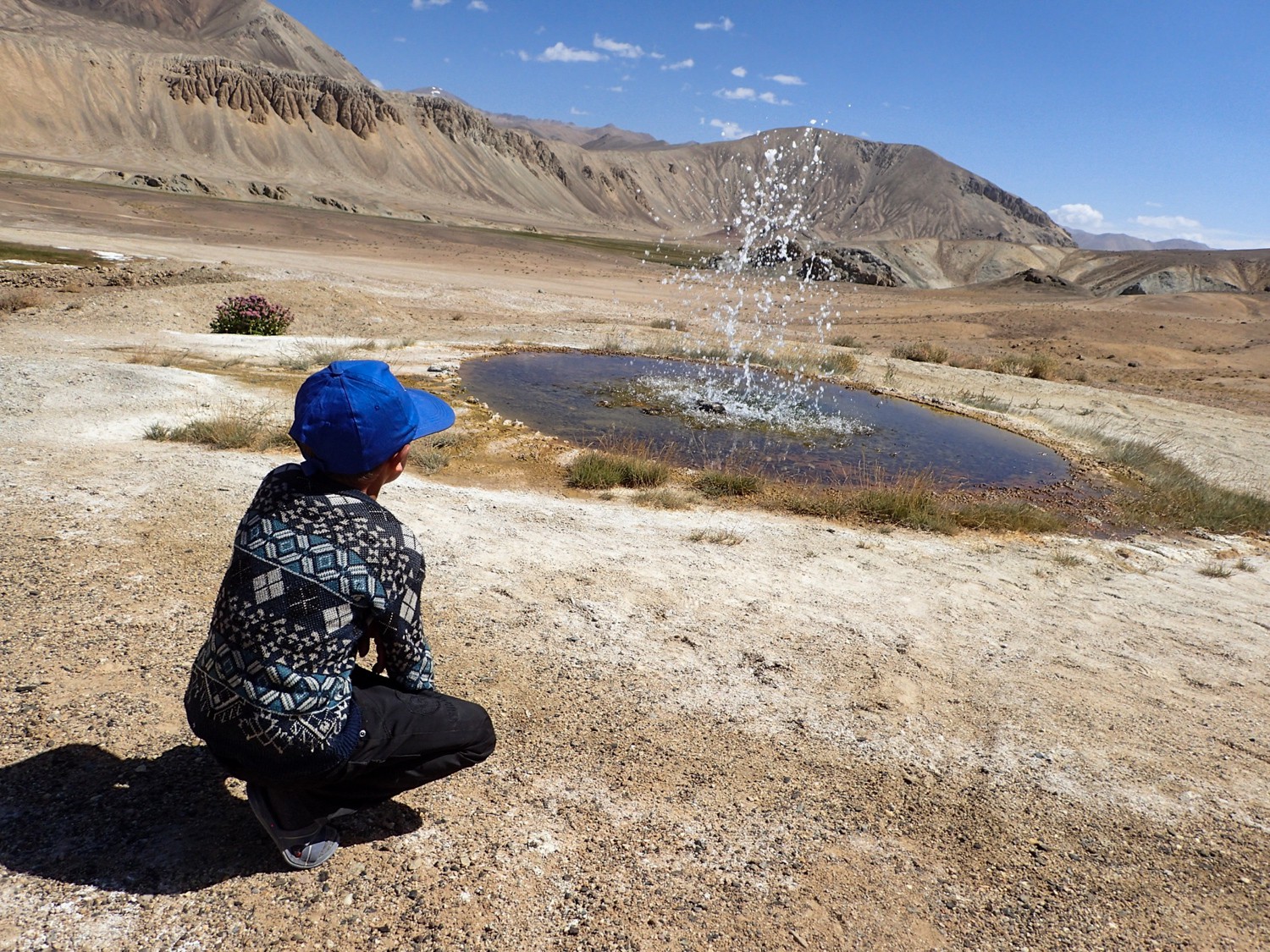
Near Alichur, Tajikistan, the Pamirs are spattered with countless hot springs, mineral baths, and small geysers—hints of an ongoing collision between India and Asia.
Photograph by Paul Salopek

Heading southwest along Tajikistan's border with Afghanistan, where 20,000-foot peaks loom in an appendage called the Wakhan Corridor.
Photograph by Paul Salopek
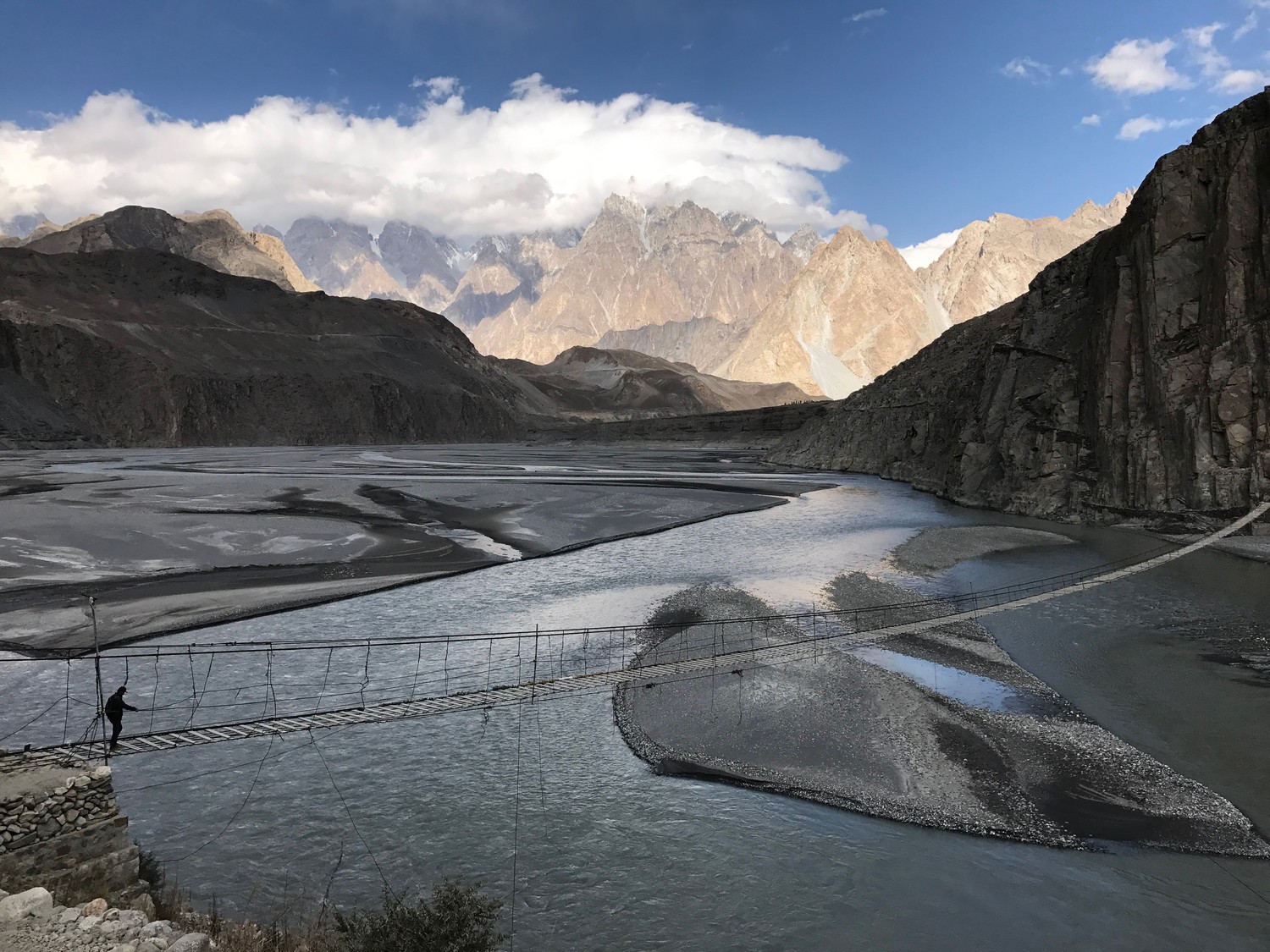
One of Gilgit-Baltistan’s many suspension bridges sways over the Passu River. The remote alpine region in Pakistan is seeing a new tourist boom.
Photograph by Paul Salopek
Horses were domesticated in Kazakhstan, but finding a cargo animal today to span this country’s vast steppes proves no easy task. Salopek and his local guides make the first foot traverse in almost a century of the wild Ustyurt Plateau straddling Kazakhstan and Uzbekistan—a barren upland crisscrossed in earlier times by Neolithic hunters, Silk Road camel drivers, and armies of Scythians, Mongols, and Russians. The furnace of the Kyzyl Kum, or Red Desert, sears the route to the legendary oasis cities of Bukhara and Samarkand.
This spring the rains cascaded down in torrents not seen in a generation, turning the steppes into glue, filling the salt basins with brackish water.Paul Salopek | From Watch: An Ancient Prairie Comes Back to Life
CHAPTER 5
Riverlands

After scaling the snow-draped ramparts of Central Asia—the Pamirs, the Hindu Kush, the Karakoram—the Out of Eden Walk's global trail meanders down onto the immense, river-fed plains of South Asia. From the green Punjab plateau in Pakistan, Paul and his local walking partners ramble eastward across ancient pilgrim roads in India, through a busy, booming world of villages and megacities toward the monsoon-drenched Bay of Bengal. Then the green pathways of Bangladesh and Myanmar lead onward to the edge of China.

A smoky sunset silhouettes the minarets of the ancient city of Lahore, Pakistan, a gateway to the old Moghul empire.
Photograph by Paul Salopek
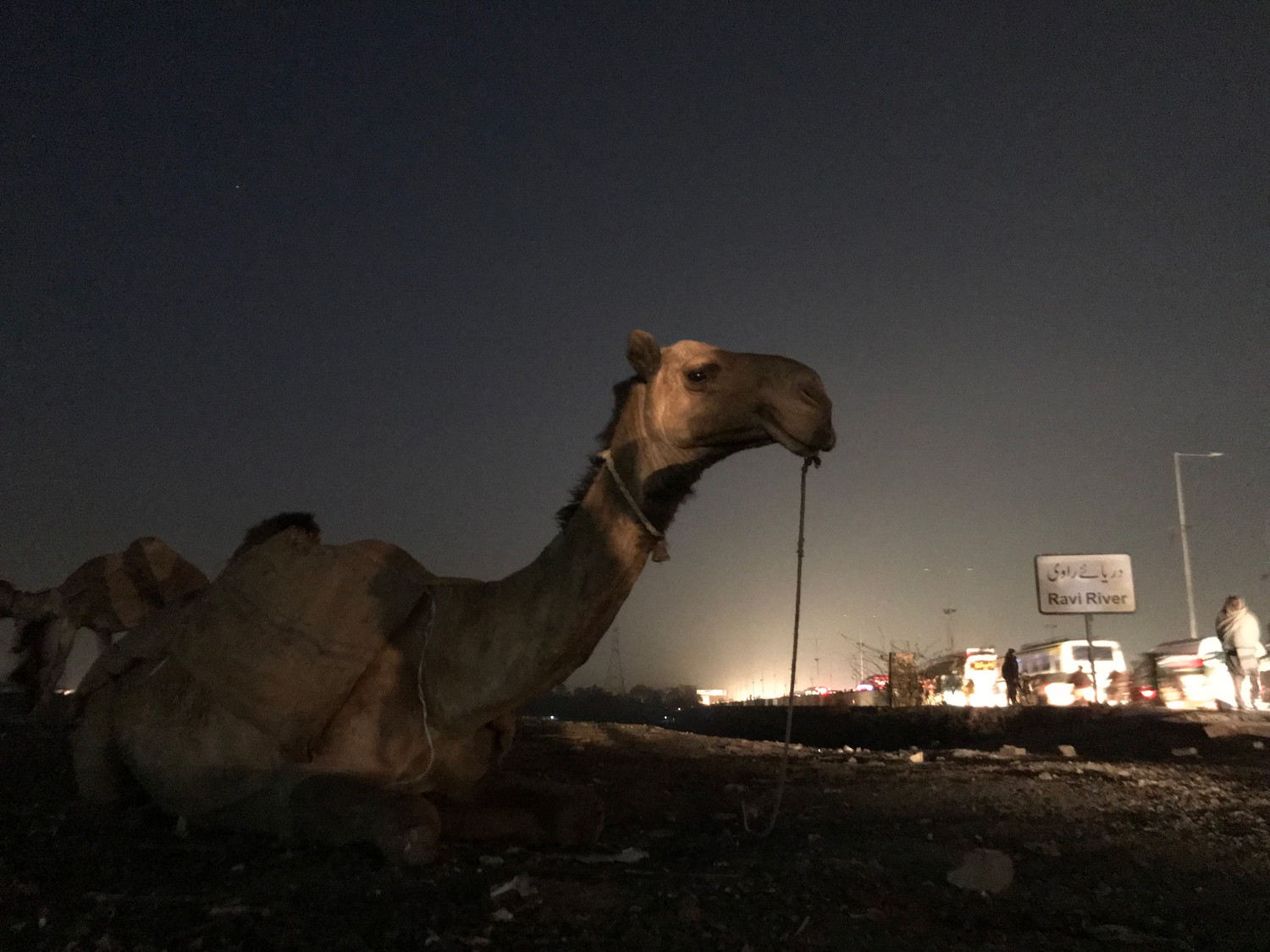
Ancient and new jostle by the banks of the Ravi River, at the suburban edge of Lahore, a megacity of 15 million.
Photograph by Paul Salopek
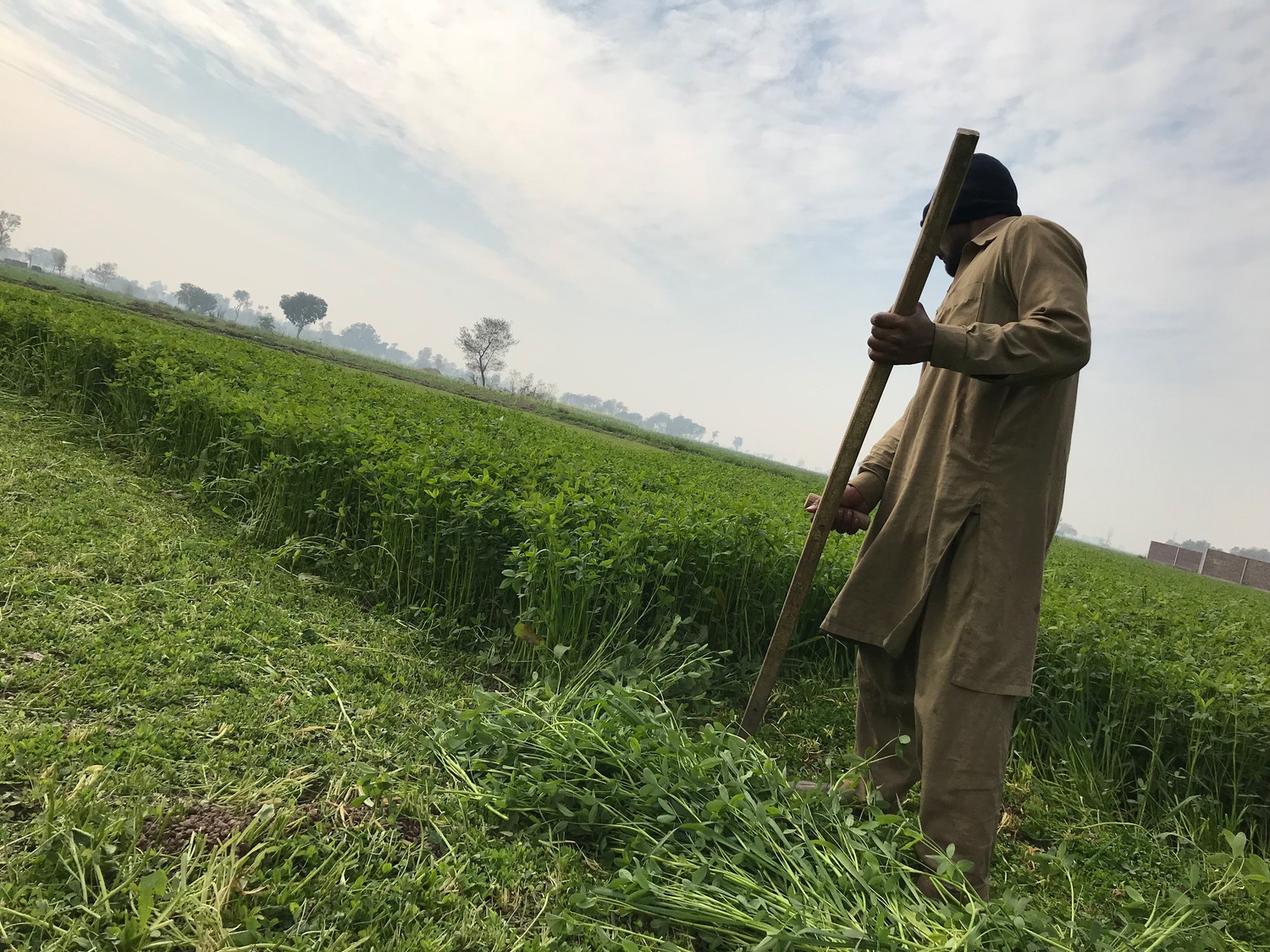
A farmer’s world has changed little over the centuries in one of the world’s oldest cultivated landscapes—Pakistan’s fertile Punjab plateau.
Photograph by Paul Salopek
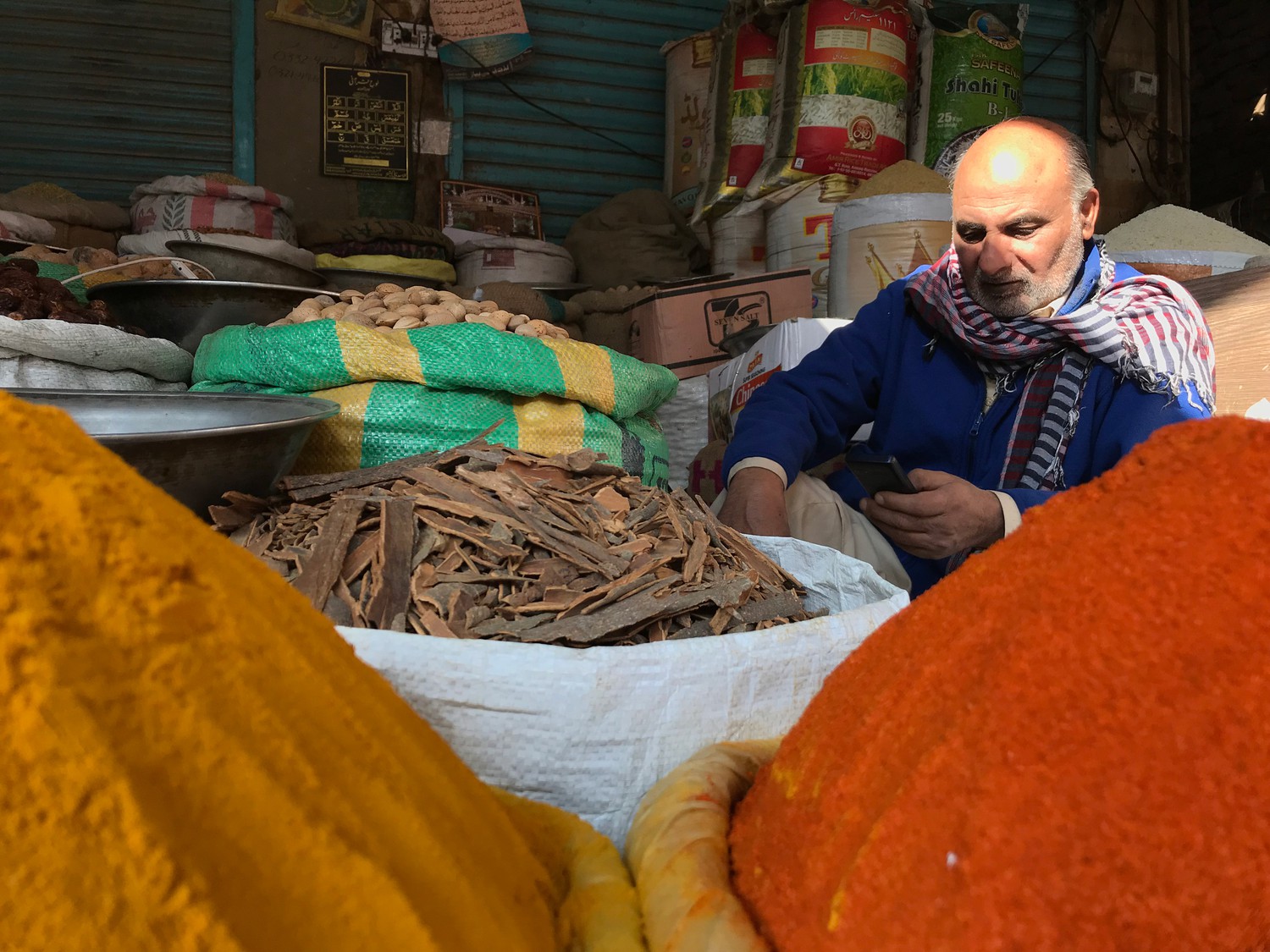
Spices brighten life in Lahore’s markets.
Photograph by Paul Salopek
After scaling the snow-draped ramparts of Central Asia—the Pamirs, the Hindu Kush, the Karakoram—the Out of Eden Walk's global trail meanders down onto the immense, river-fed plains of South Asia. From the green Punjab plateau in Pakistan, Paul and his local walking partners ramble eastward across ancient pilgrim roads in India, through a busy, booming world of villages and megacities toward the monsoon-drenched Bay of Bengal. Then the green pathways of Bangladesh and Myanmar lead onward to the edge of China.
CHAPTER 6 IN PROGRESS
Middle Kingdom
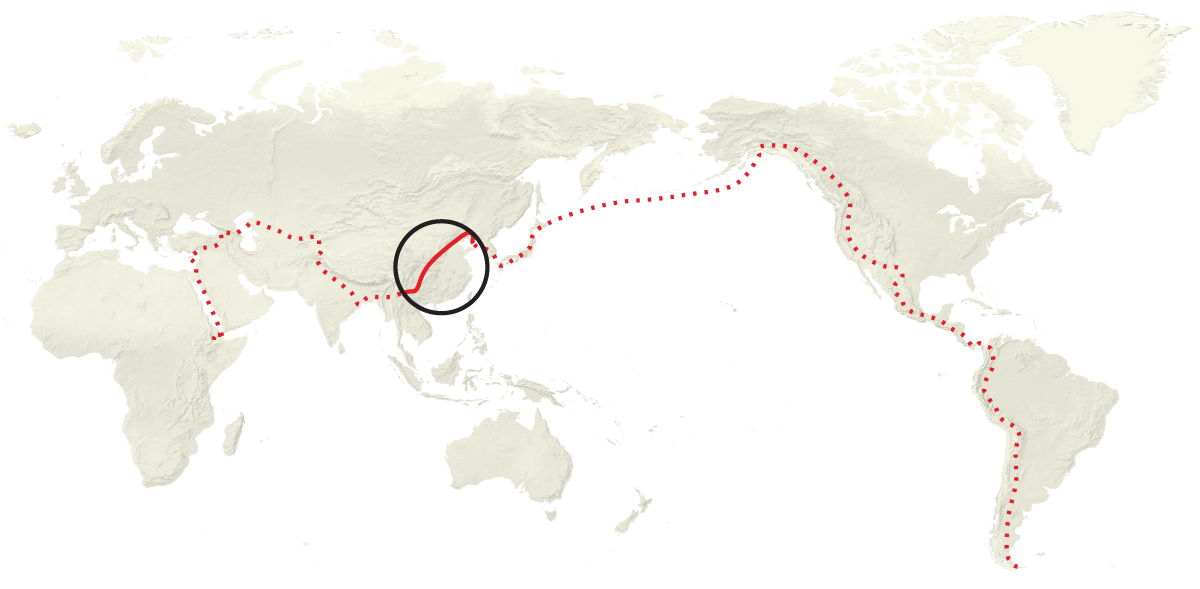
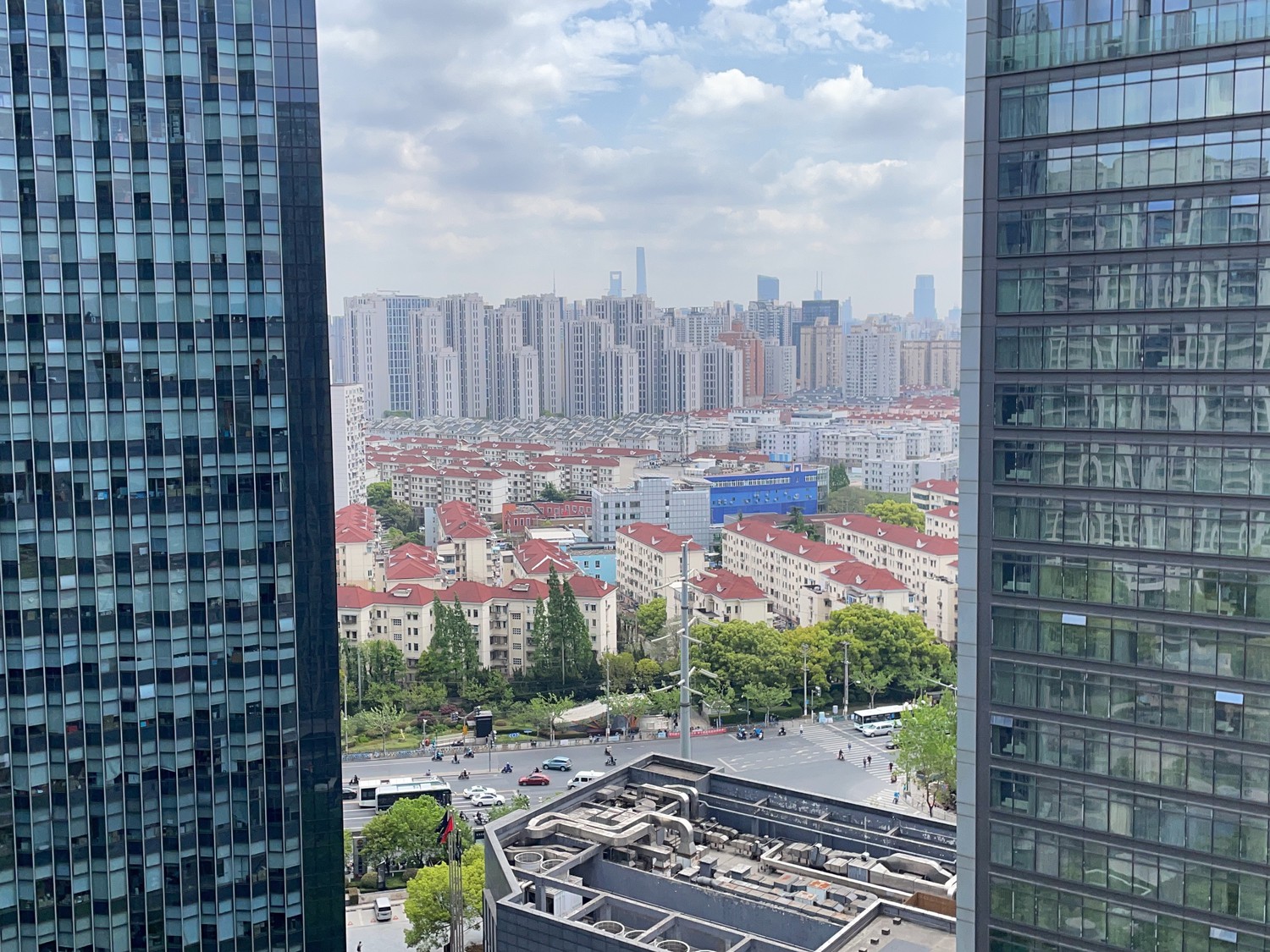
Monoliths. Paul Salopek's first view of China after quarantining in Shanghai.
Photograph by Paul Salopek
CHAPTER 7 IN PROGRESS
Asian Rim
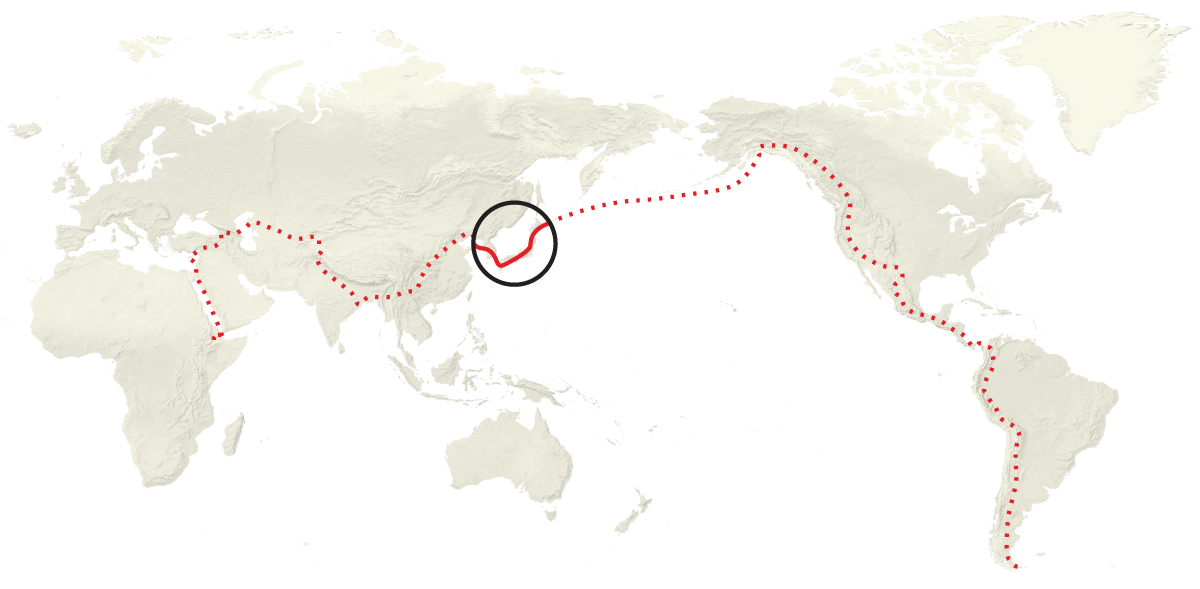
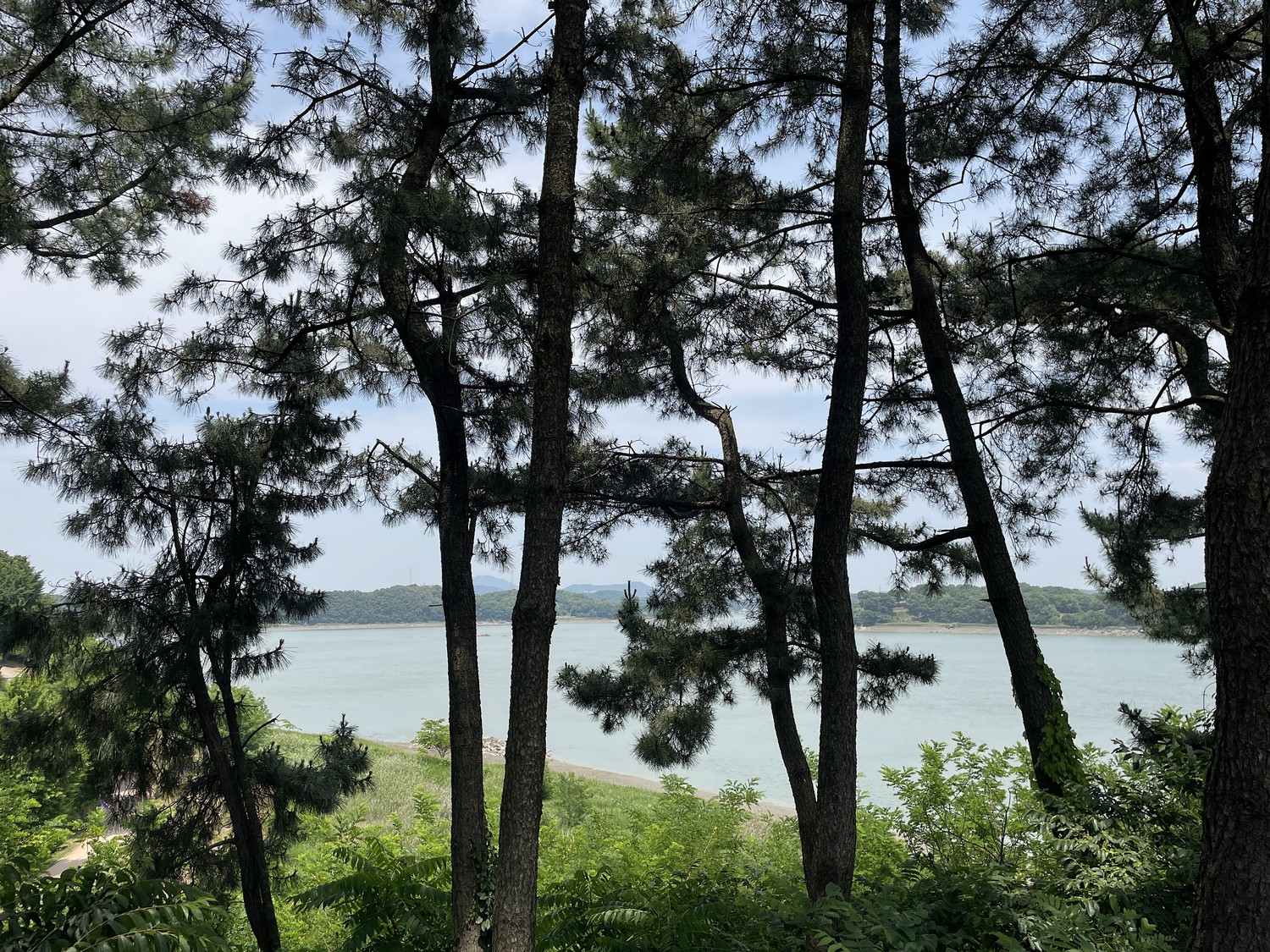
A screen of pines obscures the view of the sea-lane between Ganghwado Island and mainland South Korea—the scene of a punitive expedition by U.S. forces against the Joseon Dynasty in 1871.
Photograph by Paul Salopek